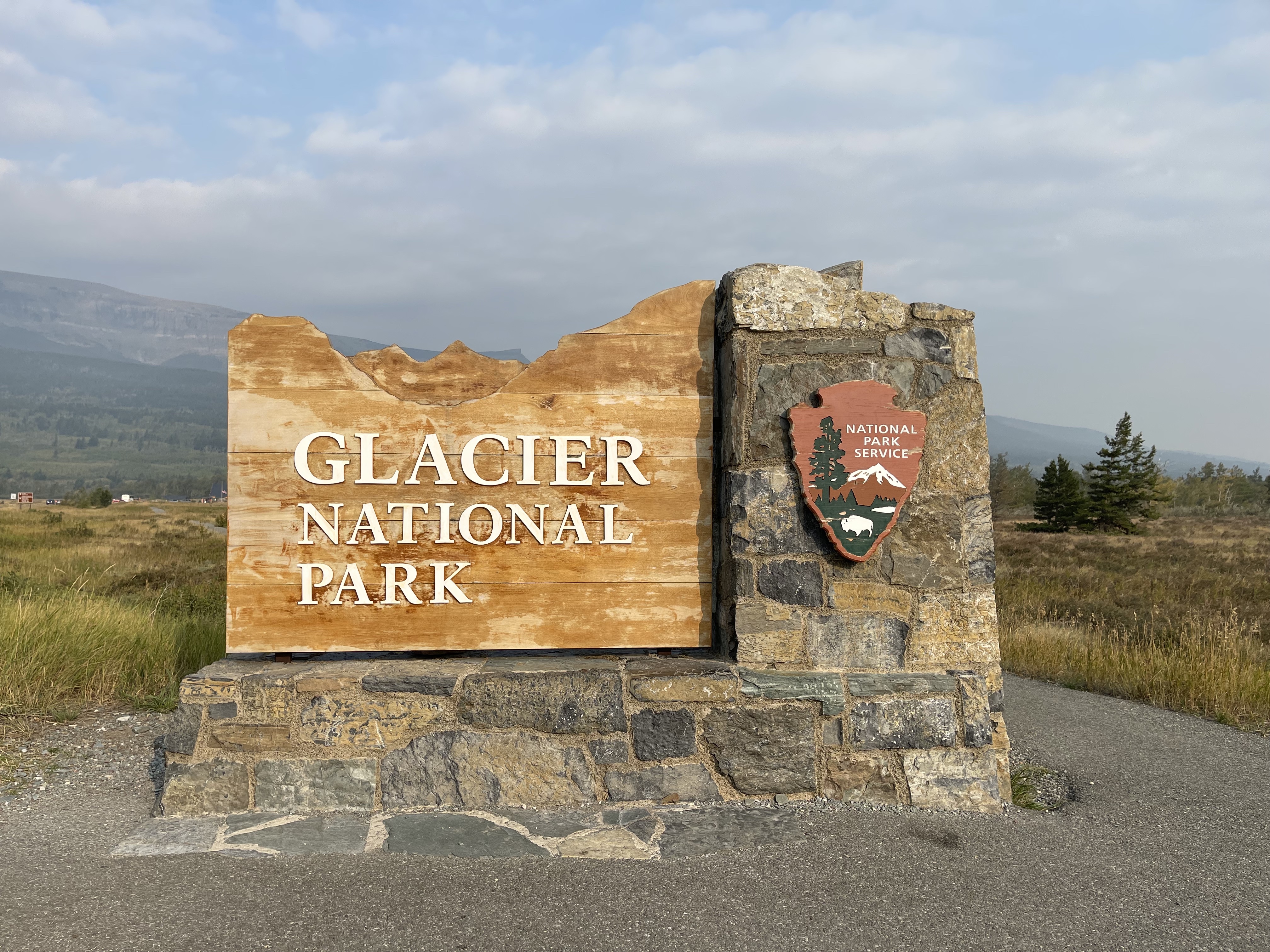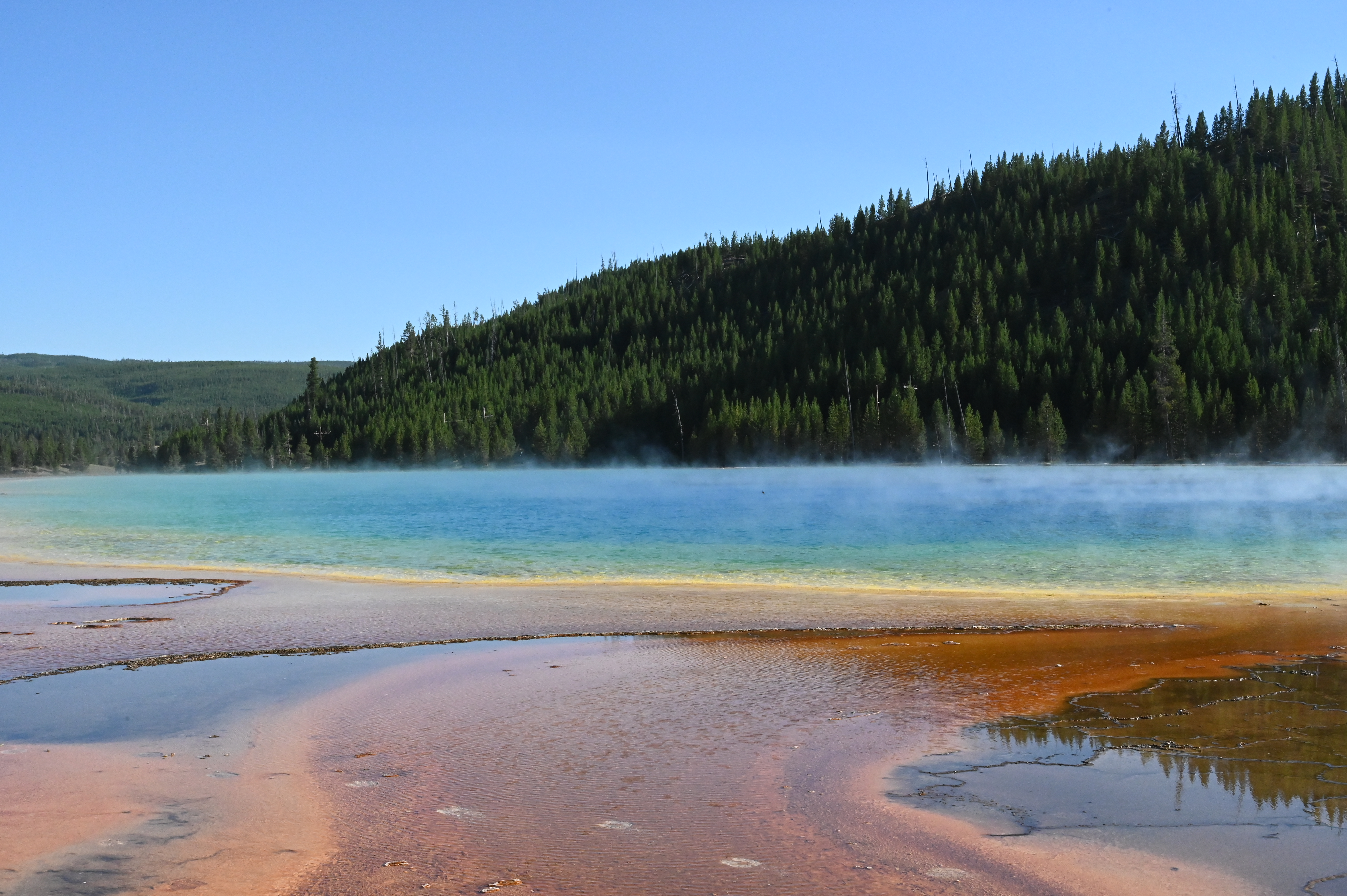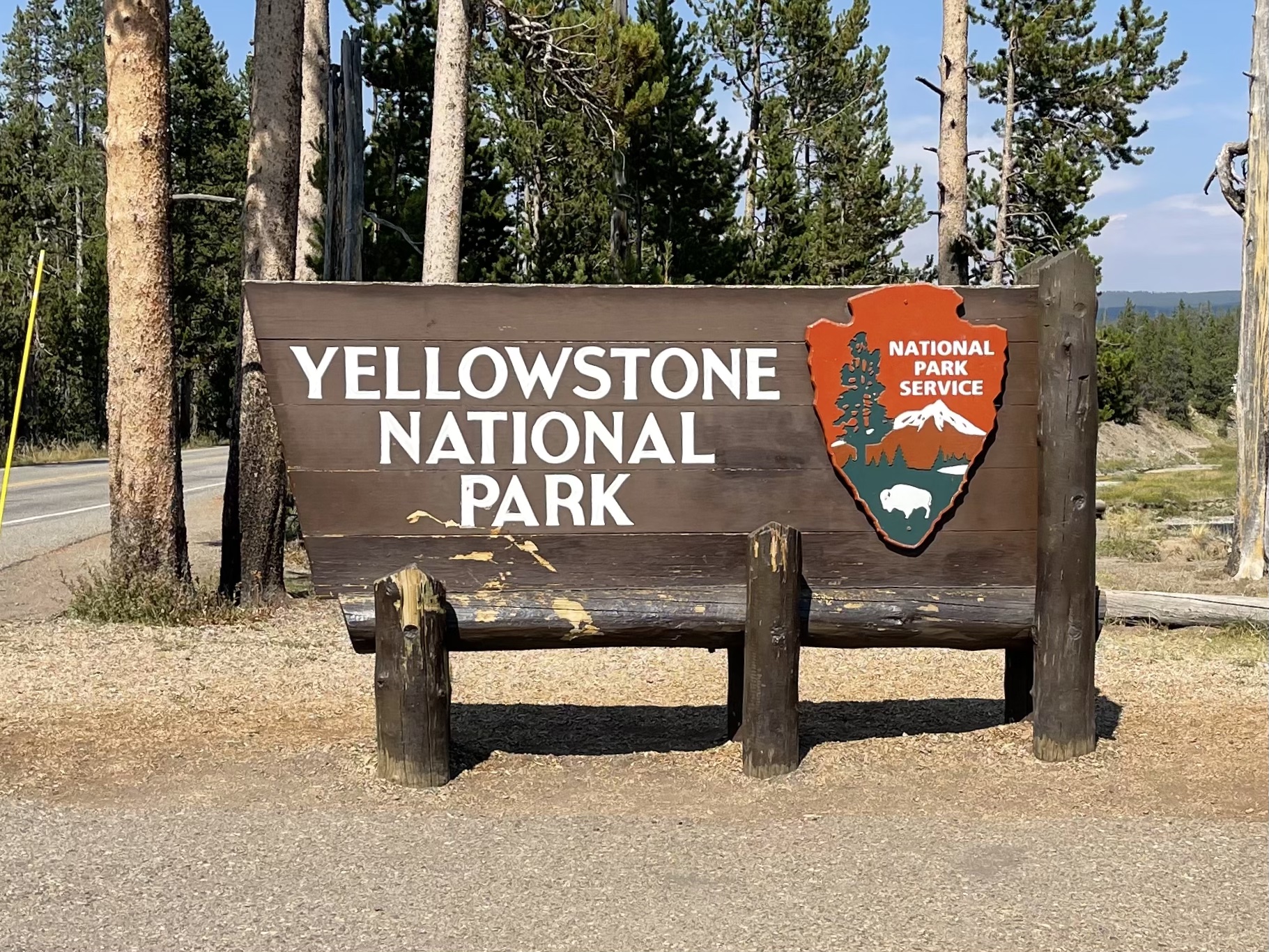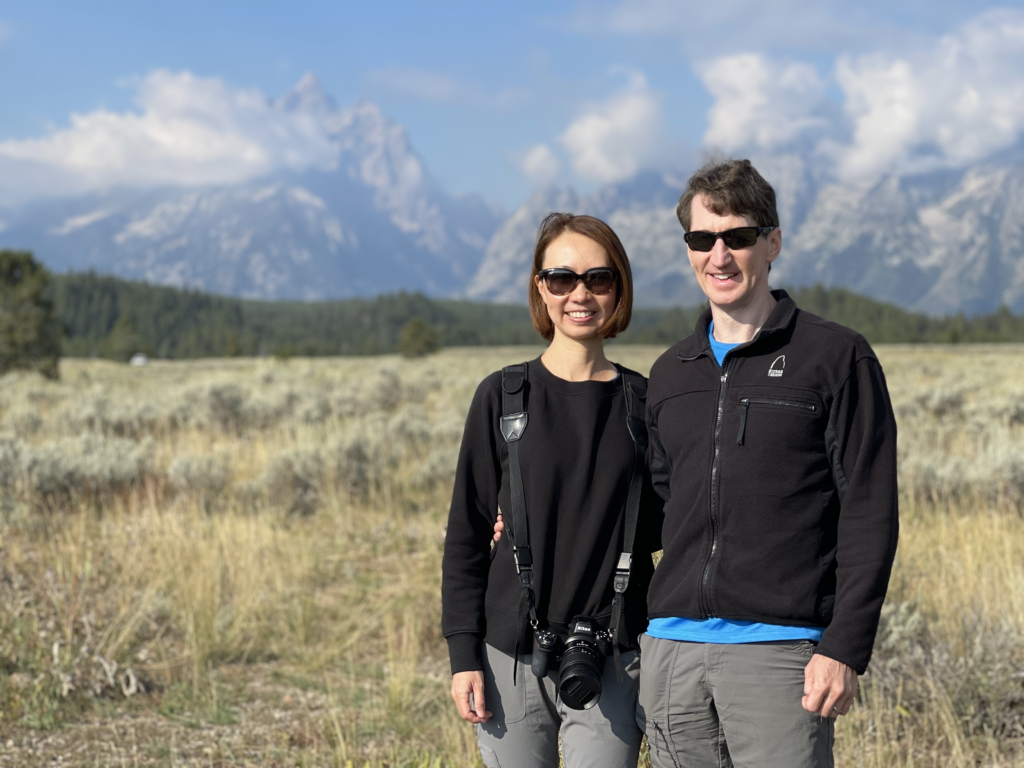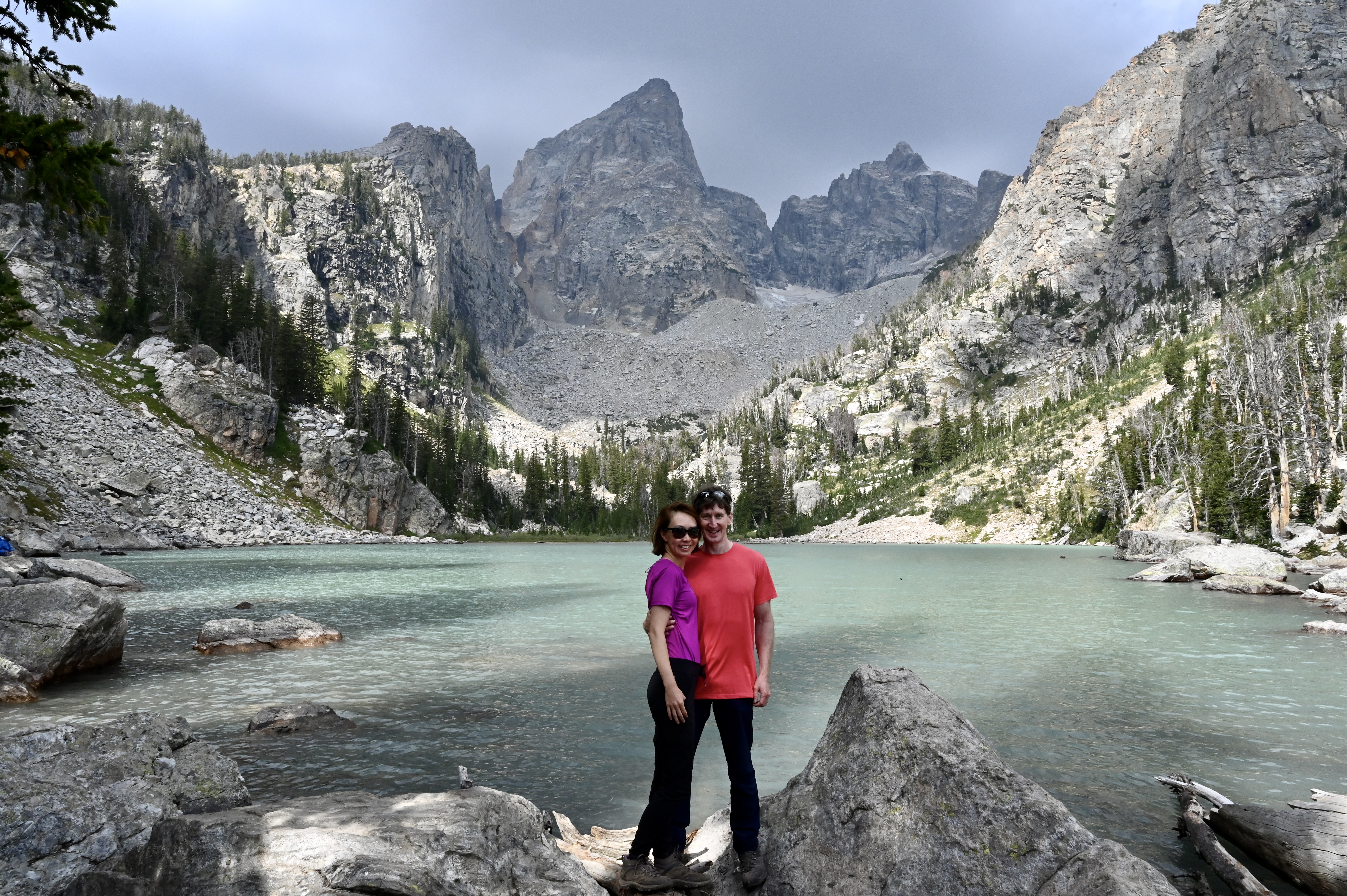Cambodia is a Southeast Asian country. When many people think of Cambodia, they first think of its mysterious ancient temples. Home to the world-renowned Angkor Wat, the legendary Khmer’s cultural heritage and numerous ancient empires that speak to us from thousands of years ago, Cambodia is a must-visit country for many avid travelers.
As Cambodia’s prime attraction, Angkor Archaeological Park in the Siem Reap Province is home to Angkor Wat and numerous other ancient temples, spread over a 100,000-acre area. Some of the temples are world-famous, such as Angkor Thom, Bayon, and Ta Phrom, and there are some hidden treasures in the Park, such as Phnom Bakheng, which are fun to discover. The most famous of all is Angkor Wat, which attracts 2.6 million visitors each year from all over the world. Spanning around 402 acres, the temple of Angkor Wat is considered the world’s largest group of religious monuments by land area. Exploring those amazing ancient temples feels like traveling back in time to a mythical country. In this article, I want to share with you all the information you need for your trip to Angkor Wat that will surely help you have a joyful time.
Table of Contents
- How to Get to Cambodia
- How to Get Cell Phone Connectivity
- Best season to visit Angkor Wat
- Where to Stay in Siem Reap
- Local Transportation among Historical Sites
- How to purchase an Angkor Park Pass
- What to See in the Angkor Archaeological Park
- Traditional Cambodian Food
- Where to Eat in Siem Reap
How to Get to Cambodia
Do I Need a Visa to Visit Cambodia?
Yes! You will need a Cambodian visa to enter Cambodia, unless you come from one of Cambodia’s neighboring countries. If you are unsure, check the details on the official Cambodian Government website.
You can obtain a visa upon arrival at one of Cambodia’s three international airports: Phnom Penh, Siem Reap, and Sihanoukville, and other major border crossings. The documents required to obtain a visa include a valid passport that has at least six months before its expiry date at the time of arrival, a recent passport-sized photo, and a $30 application fee. You will get a 30-day visa for tourism purposes.
How to prepare your international trip? Check out my previous post here.
Three International Airports in Cambodia
1. Phnom Penh International Airport
Phnom Penh International airport, in the capital of Cambodia, is the largest and busiest airport. You can find flights from most of the major cities in the world to Phnom Penh. Note that it takes more than five hours to drive from Phnom Penh International Airport to Angkor Wat. If you only plan to visit the temples of Angkor Archaeological Park, you can fly into Siem Reap International Airport instead.
2. Siem Reap International Airport
Siem Reap International Airport is located in northwestern Cambodia. Siem Reap city is where the temples of Angkor Wat are and is the main tourist destination. It is the most convenient airport for visitors; Angkor Wat is only a 10-minute drive from Siem Reap city center.
3. Sihanoukville International Airport
Sihanoukville International Airport is located in Sihanoukville, a coastal city, in western Cambodia. Sihanoukville is on the tip of a peninsula in the Gulf of Thailand with sandy beaches and small, offshore islands. Sihanoukville may be a good choice if you have time to spend on the beach after visiting the Angkor Archaeological Park.
Which airport you should fly into largely depends on your travel itinerary. Domestic flights are also convenient when you need to travel to other cities in Cambodia.
Airport Transportation
1. Hotel shuttle bus
Many hotels provide shuttle bus service for their guests that will take you from the airport to the hotel. You can check the shuttle bus service information for a hotel while you are booking your stay.
2. Private Vehicle
In Cambodia, private car service is popular. You can book a private car that can drive you from the airport to your hotel, just like calling an Uber. A private vehicle offers a more flexible schedule and more space for a large group of people.
3. Taxi
A taxi will be available at the airport for transportation. Taking a taxi is a convenient way to get to your hotel. A taxi is spacious enough for a larger group with a lot of luggage.
Note that in Cambodia, shared taxis exist, which means you may ride with other passengers. A hired private vehicle will only drive you and your party.
4. Tuk Tuk
A Tuk Tuk is an auto rickshaw. Tuk Tuks are a very popular local commute vehicle. If you are traveling light, you may also choose to ride a Tuk Tuk from the airport to the hotel.
How to Get Cell Phone Connectivity
Buy a local Sim card and put it into your own phone is the easiest way to get internet and cell connection at all times in Cambodia. You can easily find a booth that sells local SIM cards at Siem Reap International Airport and in the center area of Siem Reap. There are multiple cell phone providers with many pre-paid data plans, from a 3-days to 30-days, at very affordable prices.
The Best Season to Visit Angkor Wat
The dry season from early December to March is the best time to visit Angkor Wat. You will experience pleasant weather with the least rainfall. However, this is also the busiest time. The rainy season starts from May to October. I visited Angkor Wat in April, which is considered the hottest month in a year, around mid-30 degrees Celsius. As long as you apply sun care and keep yourself hydrated, you can enjoy your visit.
Where to Stay in Siem Reap
Most travelers will stay in the center of Siem Reap, only 6 km from Angkor Wat. The center area of Siem Reap is safe and convenient for tourists. There is an abundance of hotels with good ratings in convenient locations, and clean, at very affordable prices. You can easily find restaurants, cafes, and night markets in the center area after a tiring day exploring temples. Night markets are covered street markets common to East Asia, with stalls laid out in a grid pattern that are open late into the night.
Hotel Recommendations
- Central Corner d’Angkor: a beautiful property with a pool and plenty of pool chairs for relaxation in the courtyard
- Koulen Hotel: sits in the heart of Siem Reap, with a stunning outdoor swimming pool surrounded by tropical plants. There is an in-house restaurant that serves a variety of American and Asian dishes
- Phka Chan Hotel: From your room, you can look into a beautiful central courtyard garden with an outdoor pool.
- Blanc Smith Residence: a newly renovated French colonial building offers luxurious residence-style hotel rooms and has an excellent restaurant on site, the Blanc Leaf.
Here are some practical tips on how to find a good, cheap hotel.
Local Transportation among Historical Sites
Ride on a Tuk-Tuk
You can easily find a tuk tuk in any tourist area in Cambodia. Some of the tuk tuk drivers speak basic English. The Price of a ride can be bargained for and varies by distance and the size of your group.
Choose a tuk tuk with a driver wearing a numbered vest which means the driver is registered with the official tourism department.
Rent a bike
Riding a bicycle to tour Angkor Wat and Angkor Thom and some temples around them is another good option. You can rent a bike for about $1 per day, a lock is provided. You can easily find bicycle rental shops in the center of Siem Reap. Make sure you pack enough water and apply sunscreen.
Book a car with a driver
Book a car with a driver who can take you to each of the temples on your itinerary and pick you up when you are done touring each one. The Cost of booking a car with a driver is around $50 a day. A driver who is also a tour guide – who can take you on a tour of all the temples on your itinerary – can be hired with for a little extra. If you are traveling with family and friends, that would be the most comfortable way to commute within the temples, at a reasonable cost. Most private cars are also air conditioned. Most hotels and guesthouses can help their guests make arrangements to book a private car with a driver.
How to Purchase an Angkor Park Pass
All temples mentioned in this article are located in the Angkor Archaeological Park, and you need to purchase a ticket – an Angkor Park Pass – to enter the Park.
Angkor Park Pass Options and Ticket Office Operating Hours
There are three ticket options for visitors to Angkor Archaeological Park:
One-day Pass – $37, valid the day that you purchase the ticket. Note that if you purchase the ticket after 5 p.m., your one-day pass will be valid the next day.
Three-day Pass – $62, valid for any three days within ten days from the date of purchase (the days don’t need to be consecutive).
Seven-day Pass – $72, valid for any seven days within 30 days from the date of purchase (like the three-day pass, the days don’t need to be consecutive).
Where to Buy an Angkor Park Pass
You can purchase a ticket at the Angkor Park Pass Ticket Counters in the center of Siem Reap. It is the ONLY place that sells valid tickets. Don’t purchase tickets from hotels, tour agencies, or other third parties. The Ticket Counters accept US dollars and most credit cards. Children under 12 can enter the Park for free; an ID showing age, such as a Passport, is required at the entrance of the Park as proof of age.
The ticket office is open from 5 a.m. to 5: 30 p.m. Note that even if the ticket office is open at 5 a.m., you can be cutting it too close to watch the epic sunrise at Angkor Wat if you purchase the ticket in the early morning. I suggest you get your ticket in advance. If you plan to get a one-day pass and also to get up early to catch the sunrise, don’t worry: you can get your ticket after 5 p.m. the day before you plan to go to Angkor Wat, so your ticket will be valid the next day.
Even if you join a guided tour, Angkor Park Passes are usually not included in the tour, so you will almost always need to purchase a ticket.
If you are like me, coming to Cambodia to explore the mysterious ancient temples, I recommend getting a three-day Angkor Park Pass, which gives you the perfect amount of time to visit the famous “must-see” temples with time left over to discover some hidden treasures.
Temple Operation Hours
Your Angkor Park Pass allows you to visit the Temples during operating hours. The Operating Hours are below:
- Angkor Wat: 5 a.m.-5:30 p.m.
- Pre Rup and Phnom Bakheng: 5 a.m.- 7 p.m.
- Other Temples: 7:30 a.m. – 7 p.m.
What to See in the Angkor Archaeological Park
Angkor Archaeological Park, a UNESCO World Heritage site declared in 1992, stretches over 400 square kilometers, almost 100,000 acres. The Park encompasses thousands of temples and several capitals of the Khmer Empire, dating back from the 9th to the 15th centuries.
The remnants of ancient temple-cities are highly symbolic structures, representing different kingdoms and their rules and religious beliefs. The massive old stones and intricate sculptures weathered by a thousand years have faces that smile at us as if they still see a time when Gods inhabited the Earth.
Below is an itinerary that combines the “must-see” temples and hidden gems into a three-day tour.
A Three-day Itinerary
Day 1: Angkor Wat, Angkor Thom, Ta Prohm, and Phnom Bakheng
Day 2: Prasat Kravan, Banteay Kdei, Pre Rup, Ta Som, Neak Pean, and Preah Khan
Day 3: Banteay Srei and Beng Mealea
If you only have one day at the Angkor Archaeological Park, you can follow the itinerary Day 1 which covers all the highlights in the Park.
Do I Need to Hire a Guide to Tour the Temples?
Hiring a guide can help you understand the history behind the temples. Licensed tour guides can be hired for about $20 a day, in most major languages. If you prefer to guide yourself, the book “Temples of a Thousand Faces” by John Shors, is an excellent source to understand the stories behind the temples and the carvings.
Tips for Visiting Angkor Archaeological Park
- Act respectfully: some of the temples are still in use today, don’t interfere with the monks
- Dress code: Visitors of all genders are requested to cover their shoulders and knees.
- Footwear: In the temples, you will be visiting by foot, so wear a good pair of walking shoes
- Sun care: apply enough sunscreen and bring bottled water
- Don’t encourage child vendors: don’t purchase things from children since that might encourage their parents keep them from school to sell in the street
Day 1: Angkor Wat, Angkor Thom, Ta Prohm, and Phnom Bakheng
Angkor Wat
Angkor Wat is the most iconic of all the temples, a symbol of Cambodia today. Angkor Wat was one of the finest examples of Khmer architecture when King Suryavarman II built it, in the early 12th century. Originally built as a Hindu temple and gradually transformed into a Buddhist temple at the end of the 12th century, the structure of Angkor Wat reflects two classic types of Khmer architecture: the temple-mountain and the galleried temple.
The temple-mountain architecture has a pyramid shape. The tiered towers in the elevated sanctuary at the center of the temple represent Mount Meru, the home to the Gods in Hinduism.
The outer gallery in Angkor Wat is an open hallway looking into a courtyard through a wall with pillars. The central towers of Angkor Wat that symbolize the mountains of Mount Meru are surrounded by an outer gallery.
Watching the sunrise at Angkor Wat is one of the “must-do” activities when people visit Cambodia. You will see the sun slowly rise through the spires of Angkor Wat, with a perfect reflection in the still water in front of the temple.
Check out the exact sunrise time with your hotel the day before you go and get to Angkor Wat a bit early (at least 30 minutes before sunrise) to secure a good position to get the iconic photo. Most important, be sure to bring your Angkor Park Pass.
Highlights in Angkor Wat
The Major Temple
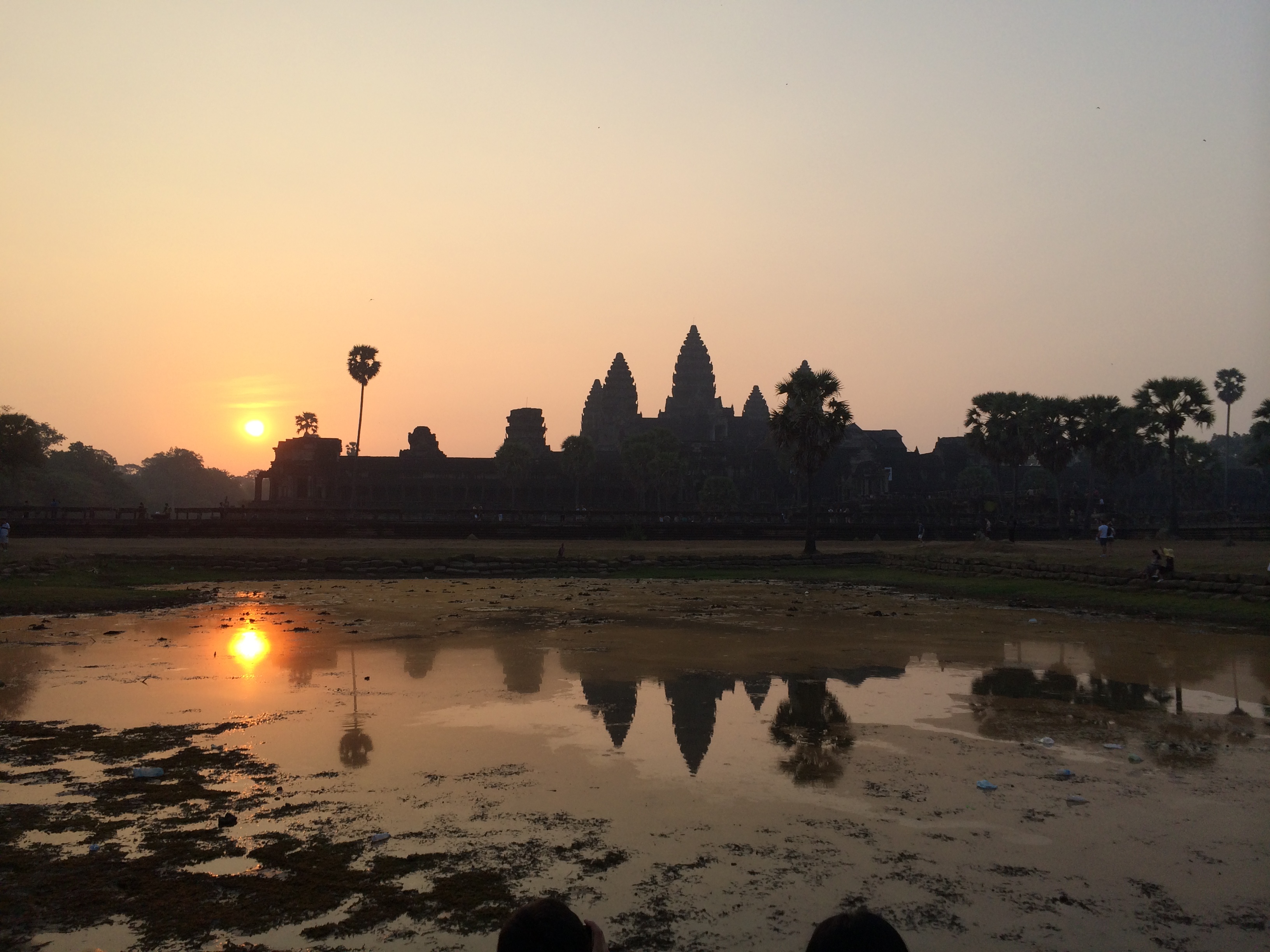
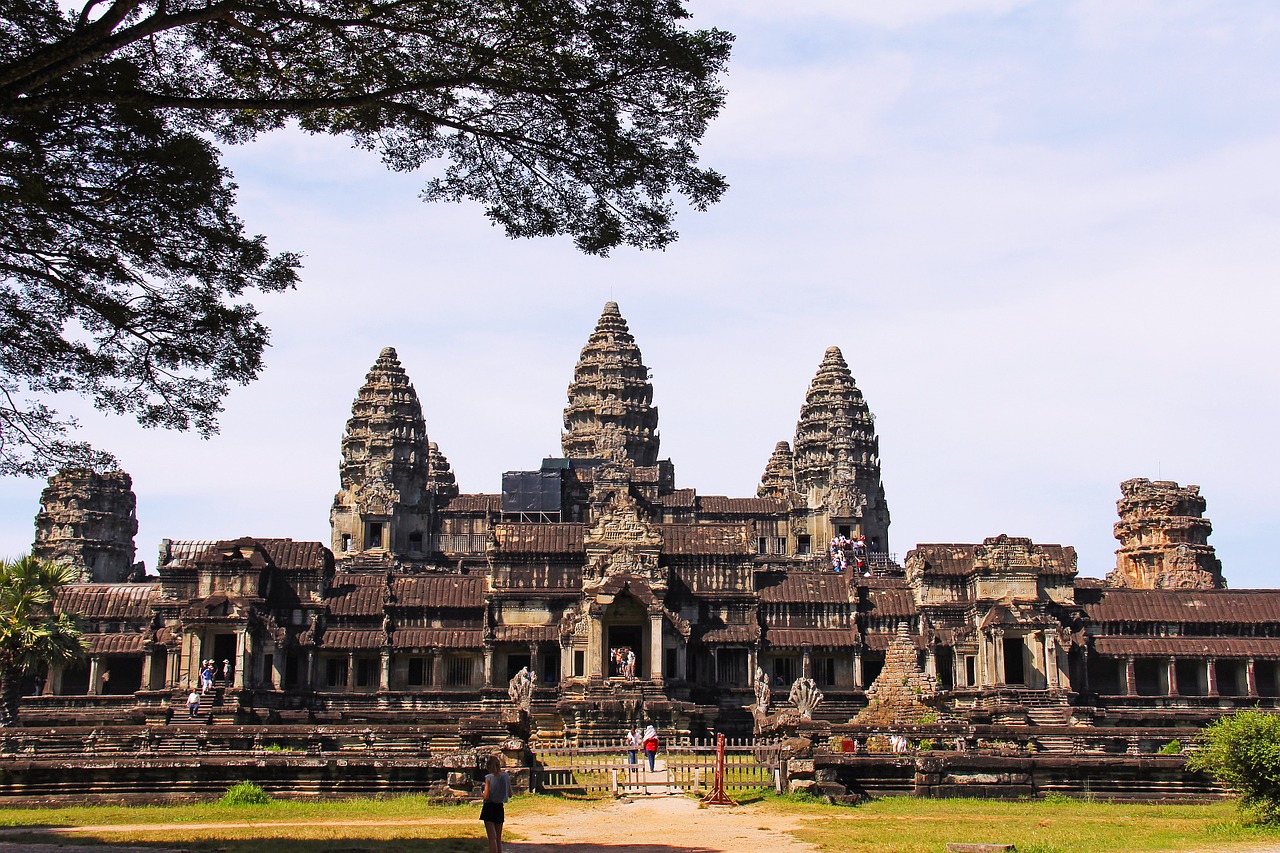
Heaven and Hell Gallery
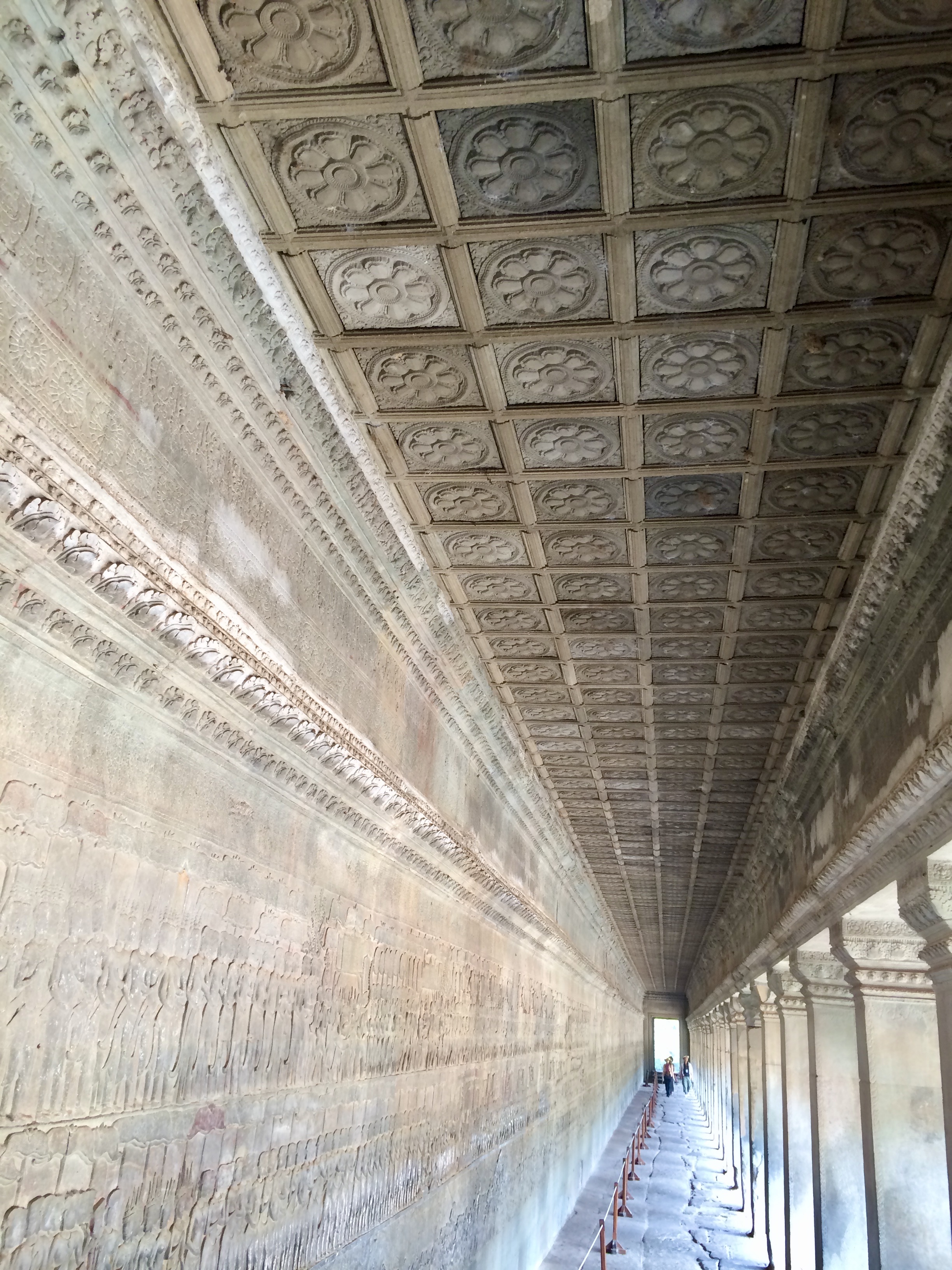
Outer Gallery
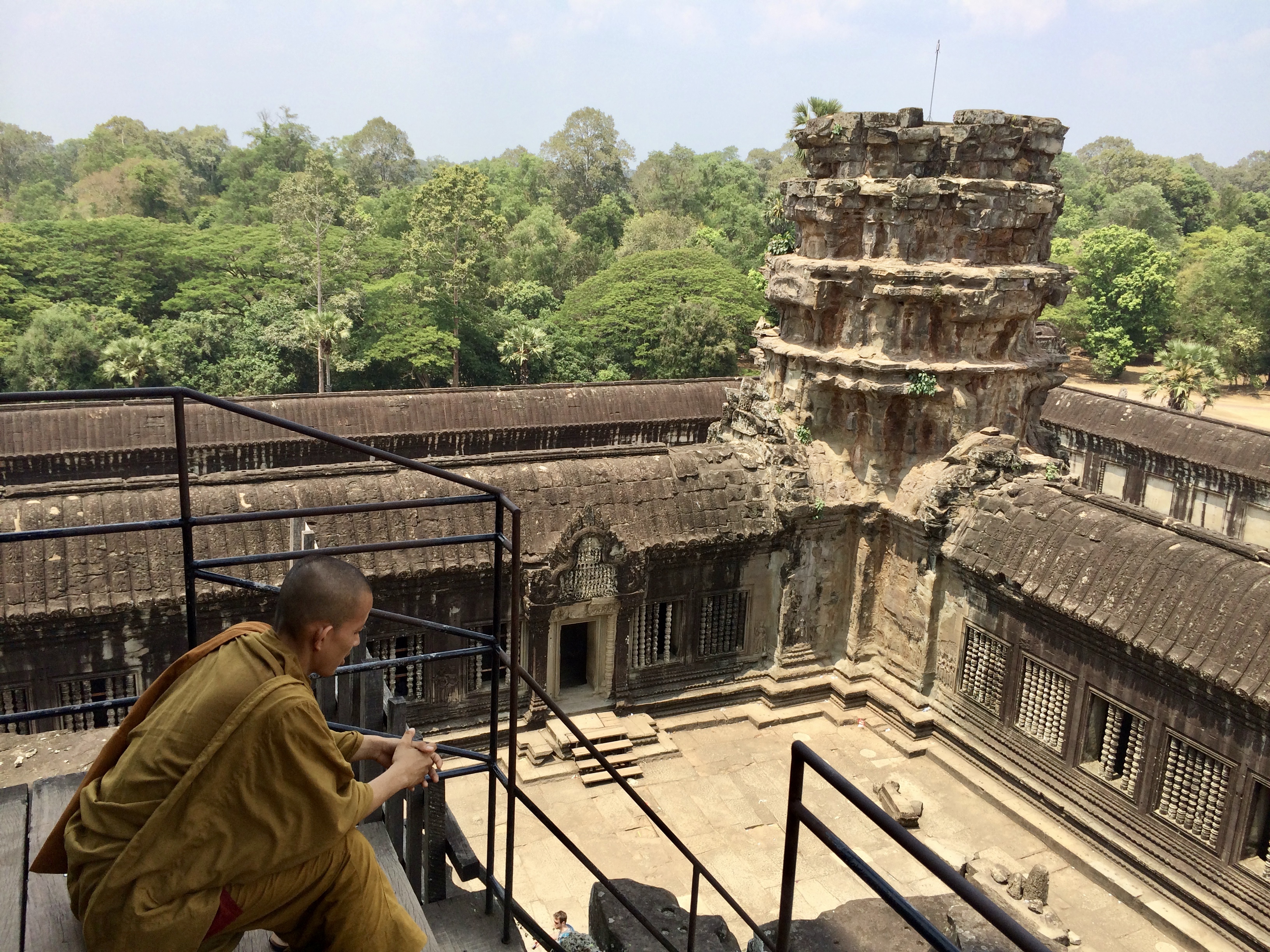
Angkor Thom
Angkor Thom is located about 9.5 km to the north of Angkor Wat. Angkor Thom was built as the state temple of Jayavarman VII in the late 12th century. The word “Angkor Thom” means “Big City” in the Khmer language. The city of Angkor Thom is surrounded by walls, in a square shape, with 5 gates – two gates in the eastern wall and one gate in each of the other walls.
Highlights in Angkor Thom
South Gate
Tonle Om Gate, also known as South Gate by visitors, is where many visitors enter the Angkor Thom. The South Gate is the best-preserved of all the Angkor Thom gates.
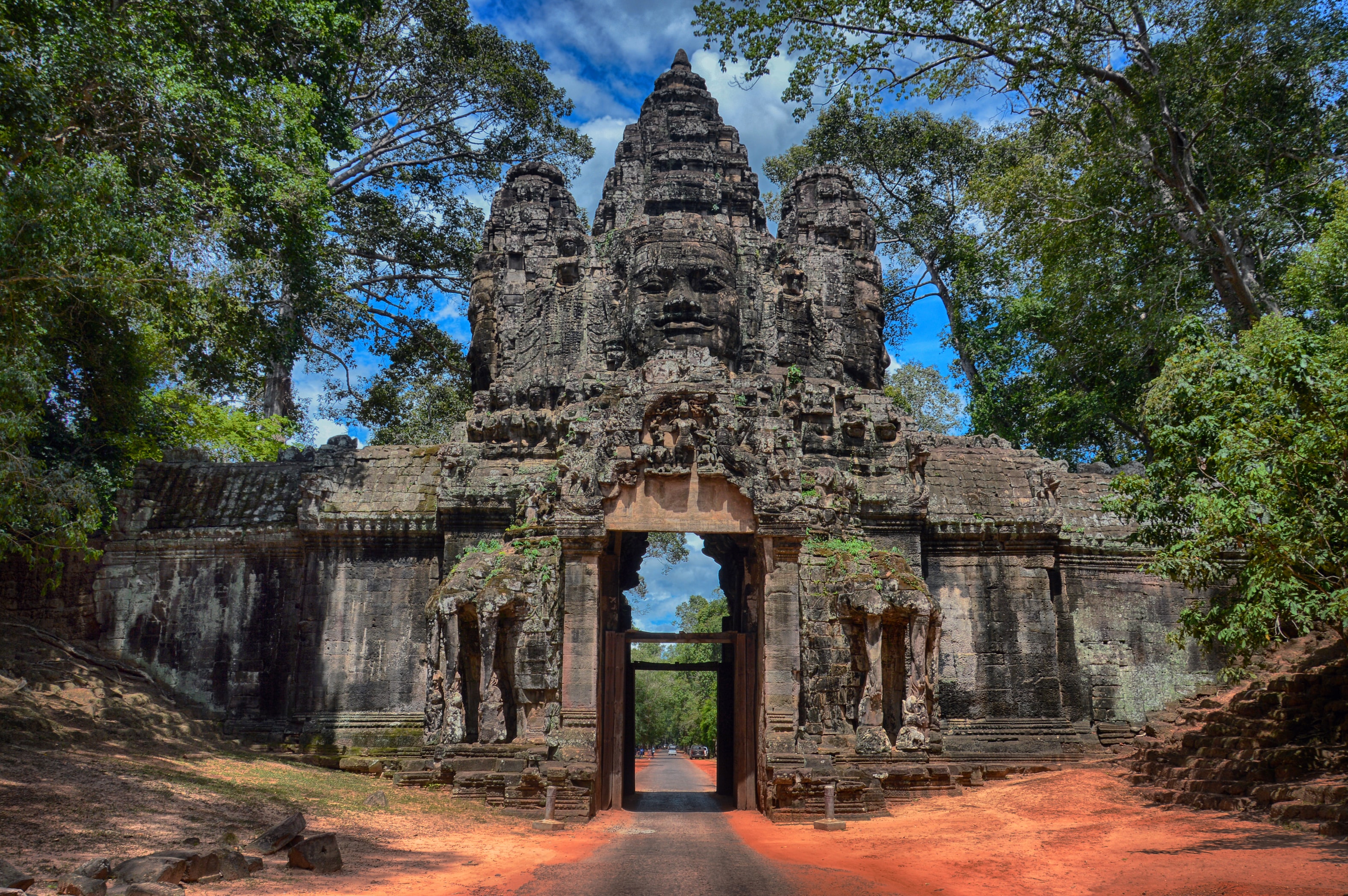
Bayon Temple
Bayon Temple is located in the heart of Angkor Thom, north of the South Gate. The Bayon was built between the late 12th century and the early 13th century. You can easily recognize Bayon Temple with the giant stone smiling faces on many towers.
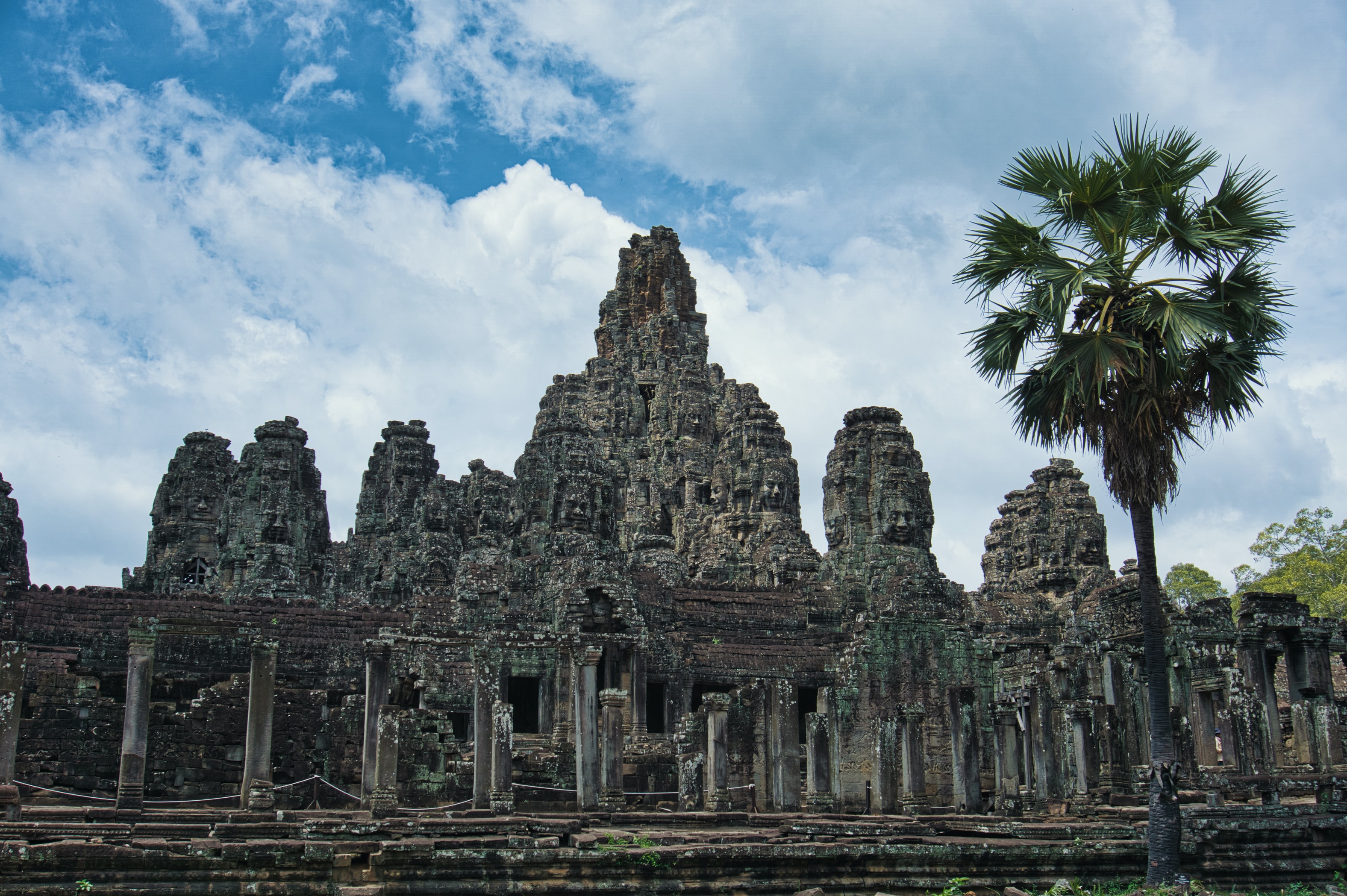
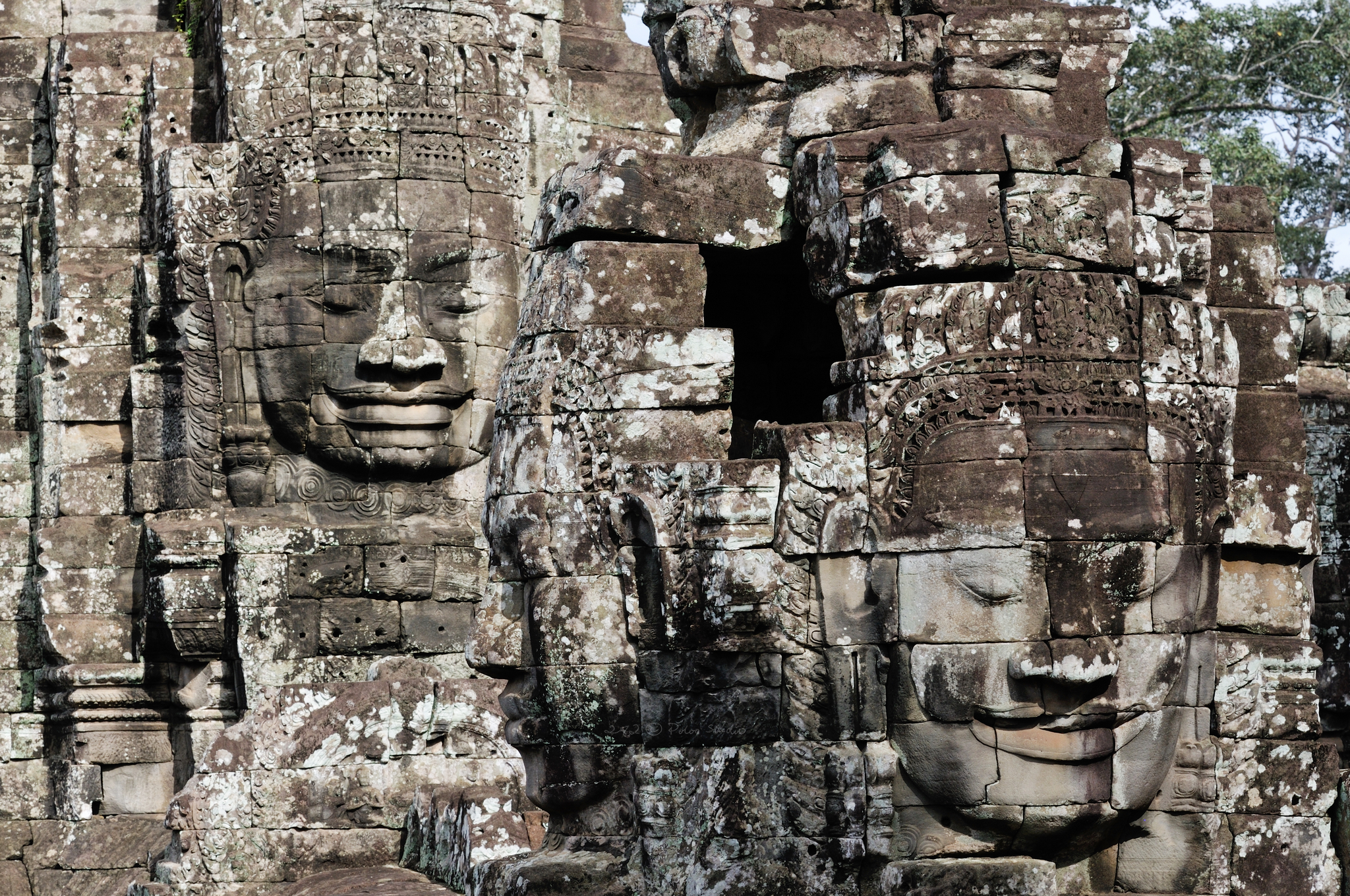

Baphoun Temple
Baphoun Temple is located to the northwest of the Bayon Temple. Baphoun was built in the mid-11th century, as the state temple of Udayaityavarman II. Baphoun Temple is a three-tiered temple-mountain architecture, with an elaborate carving on every surface. The temple was dismantled in the mid-1970’s during the Khmer Rouge, and that’s why you will see a lot of stones lying on the ground now.
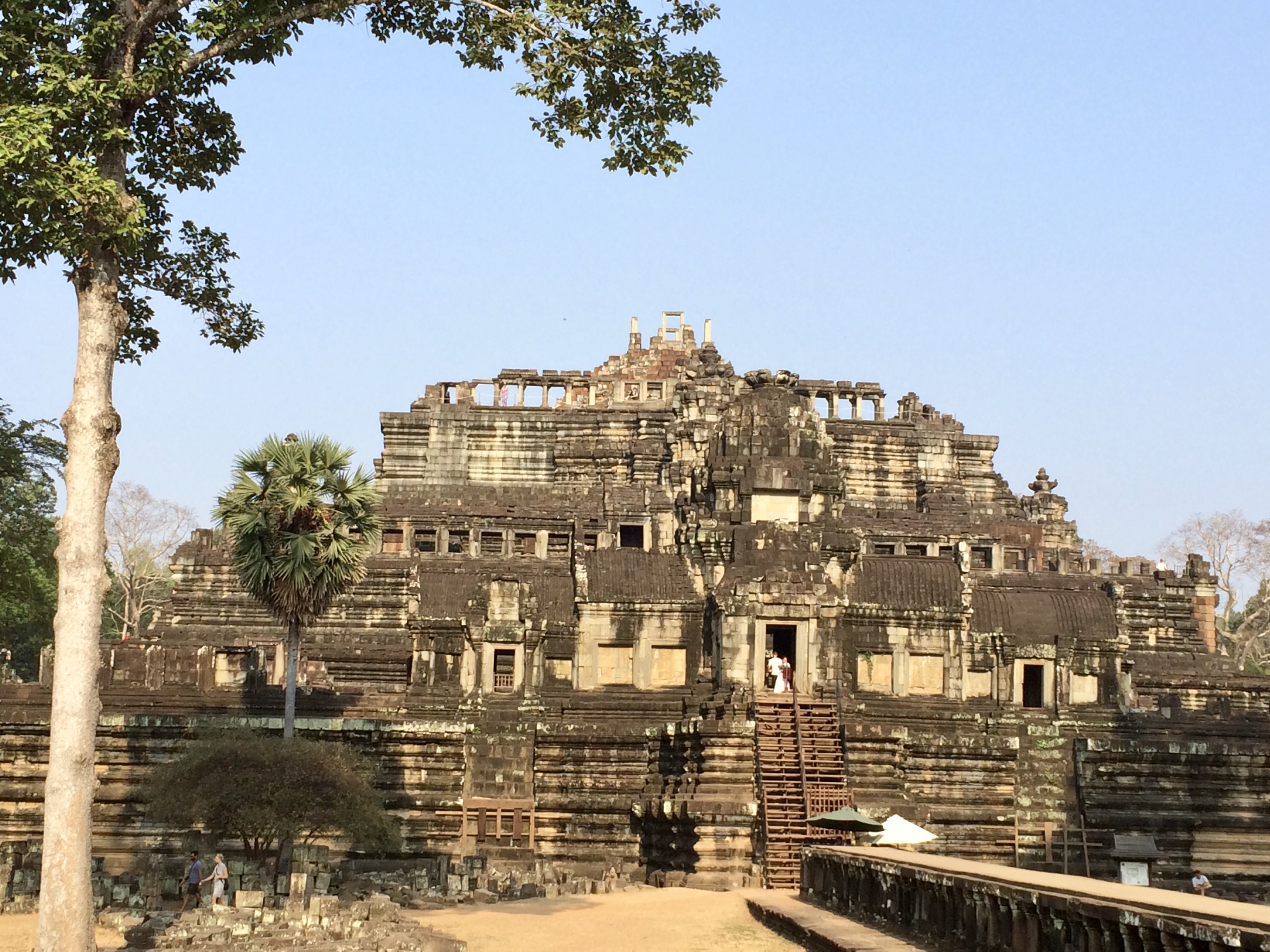
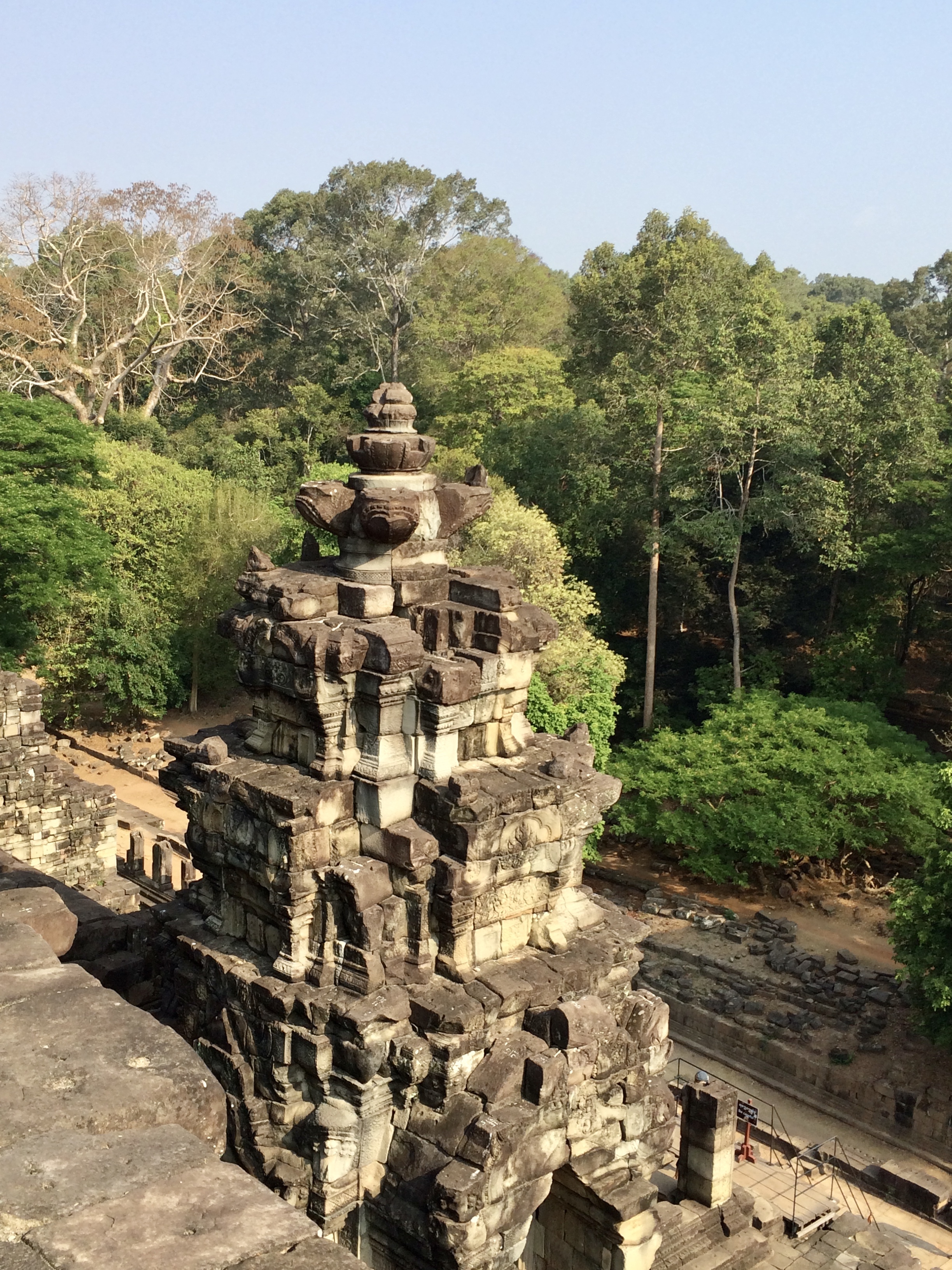
Terrace of the Elephants
The terrace of the Elephants is located to the northeast of the Baphoun Temple. The terrace of the Elephants was used by King Jayavarman VII as a platform to see his victorious returning army. It is easily recognized by the vivid carving of the elephants’ heads with long trunks.
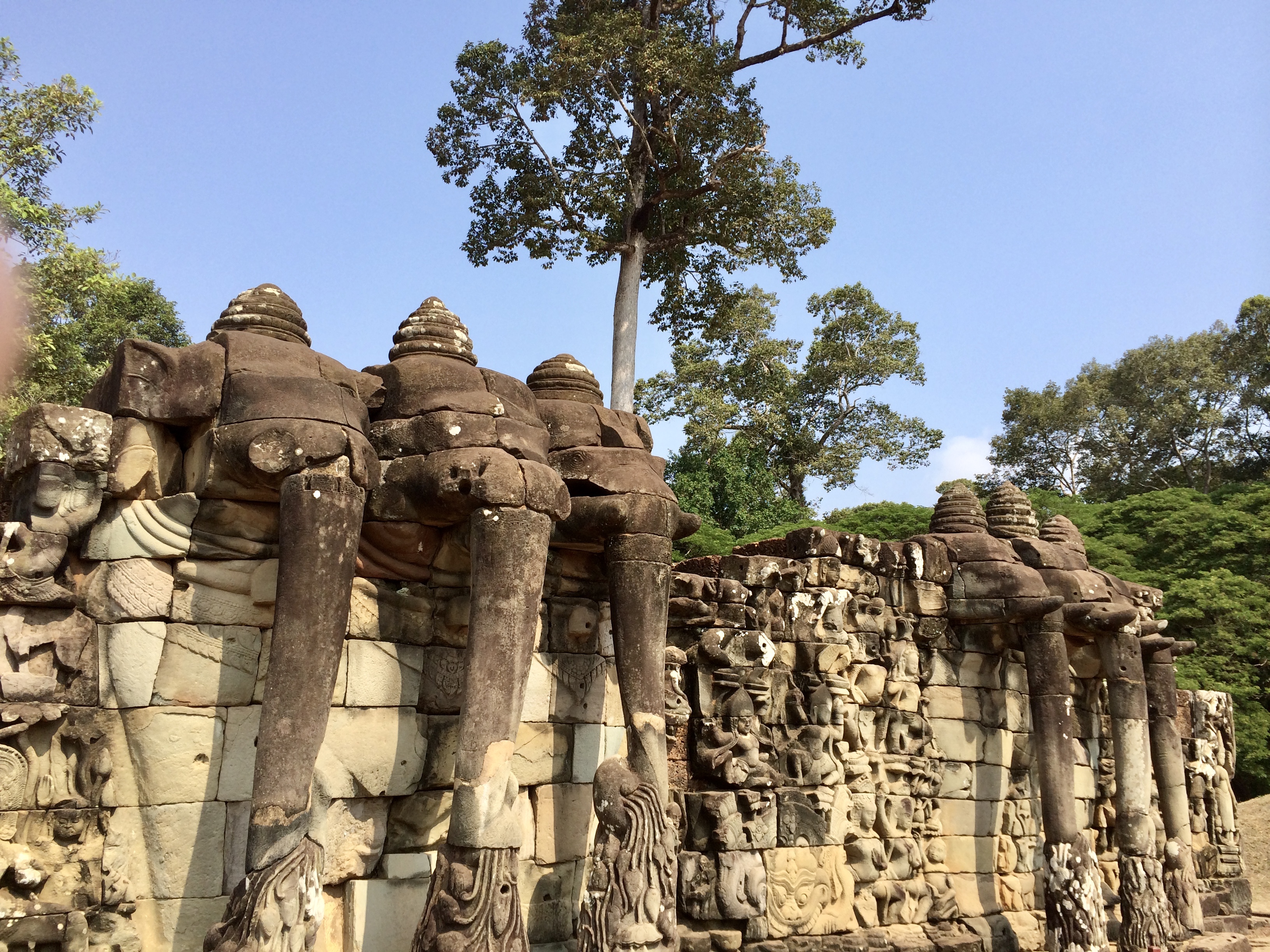
Phimeanakas
Phimeanakas is located to the north of Baphuon. It was built at the end of the 10th century, a three-tier Hindu temple, and used to house a Royal Palace.
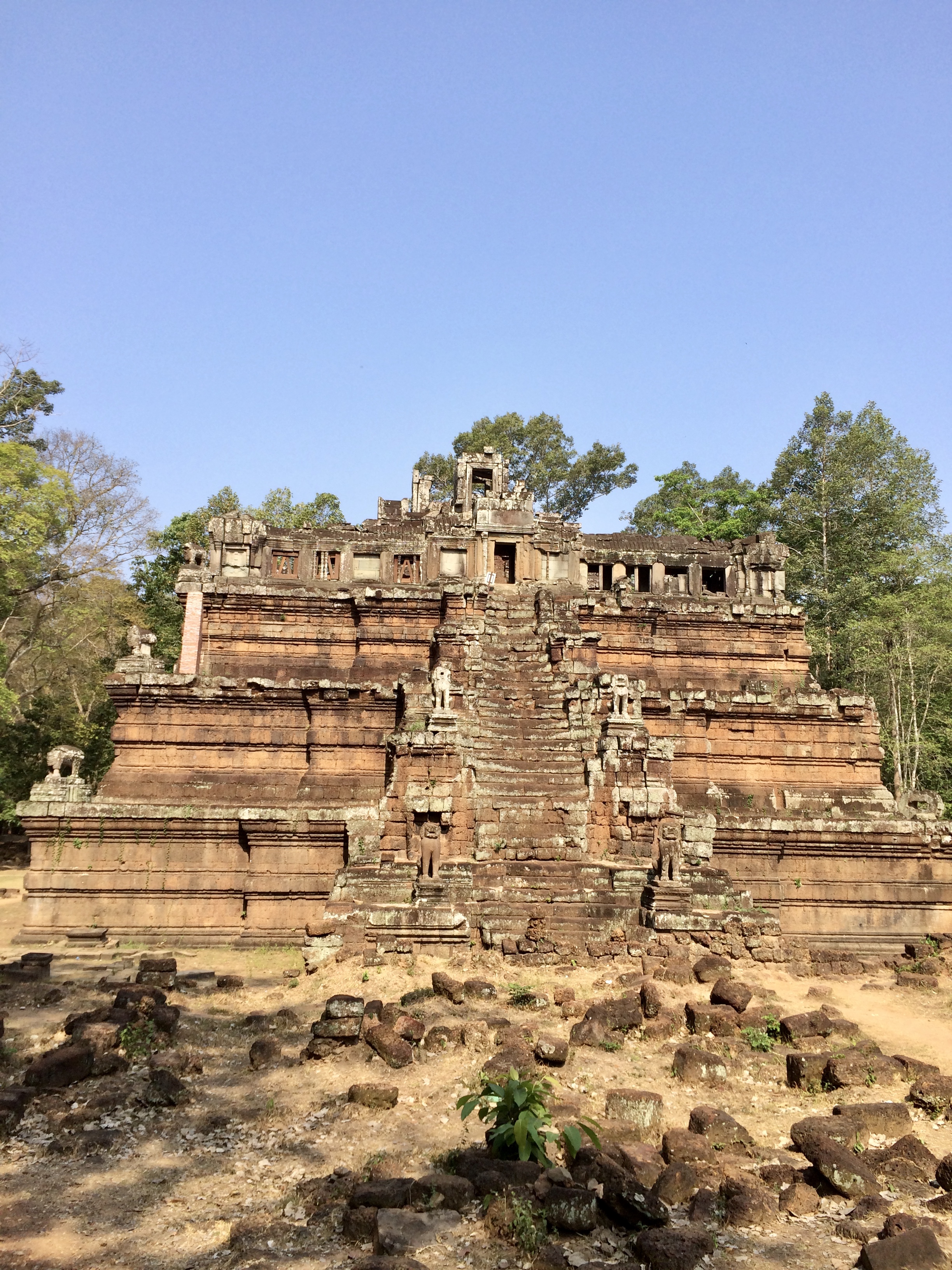
Preah Palilay
Head to the northwest of Phimeankakas, you will get to a Buddhist sanctuary, Preah Palilay. The temple was built in the last half of the 12th century for King Jayavarman VII.
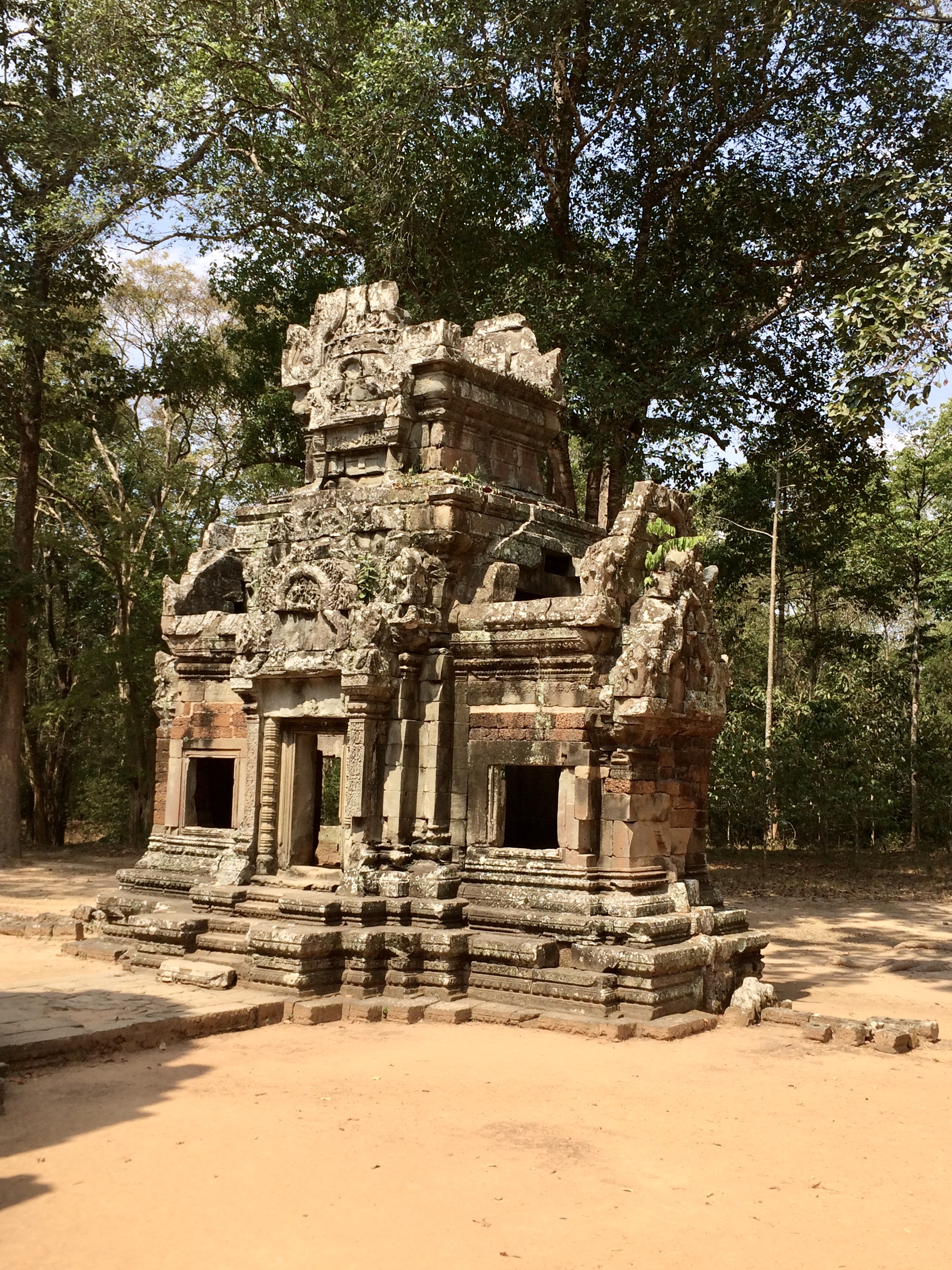
Ta Prohm Temple
Ta Prohm Temple is located to the southeast of the East Gate of Angkor Thom. The temple was built between the late 12th century and the early 13th century. Ta Phrom temple is one of the most photographed temples. It is where Hollywood meets Cambodia, the scene where the movie Tomb Raider was filmed. Many visitors come to Ta Phrom every day.

Phnom Bakheng Temple
At the end of the day, on your way back to Siem Reap from Ta Phrom, head southwest and you will run across Phnom Bakheng Temple. Phnom Bakheng Temple was built at the end of the 9th century, during the reign of King Yasocarman. The Temple is located on a top of a hill, where a lot of visitors come to watch the spectacular sunset views, overlooking Tonle Sap lake.
Day 2 Prasat Kravan, Banteay Kdei, Pre Rup, Ta Som, Neak Pean, and Preah Khan
Prasat Kravan
Prasat Kravan is located about 6 miles to the northeast of Siem Reap center. The Prasat Kravan temple was built in the 10th century, dedicated to Vishnu, one of the principal deities of Hinduism. The temple consists of five reddish brick towers, a rare type of architecture in Khmer monuments.

Banteay Kdei
Banteay Kdei is located to the north of Prasat Kravan. Banteay Kdei was built between the late 12th century and the early 13th century for King Jayavarman VII. The temple was created in a similar architectural style as Bayon and Ta Phrom but on a smaller scale.
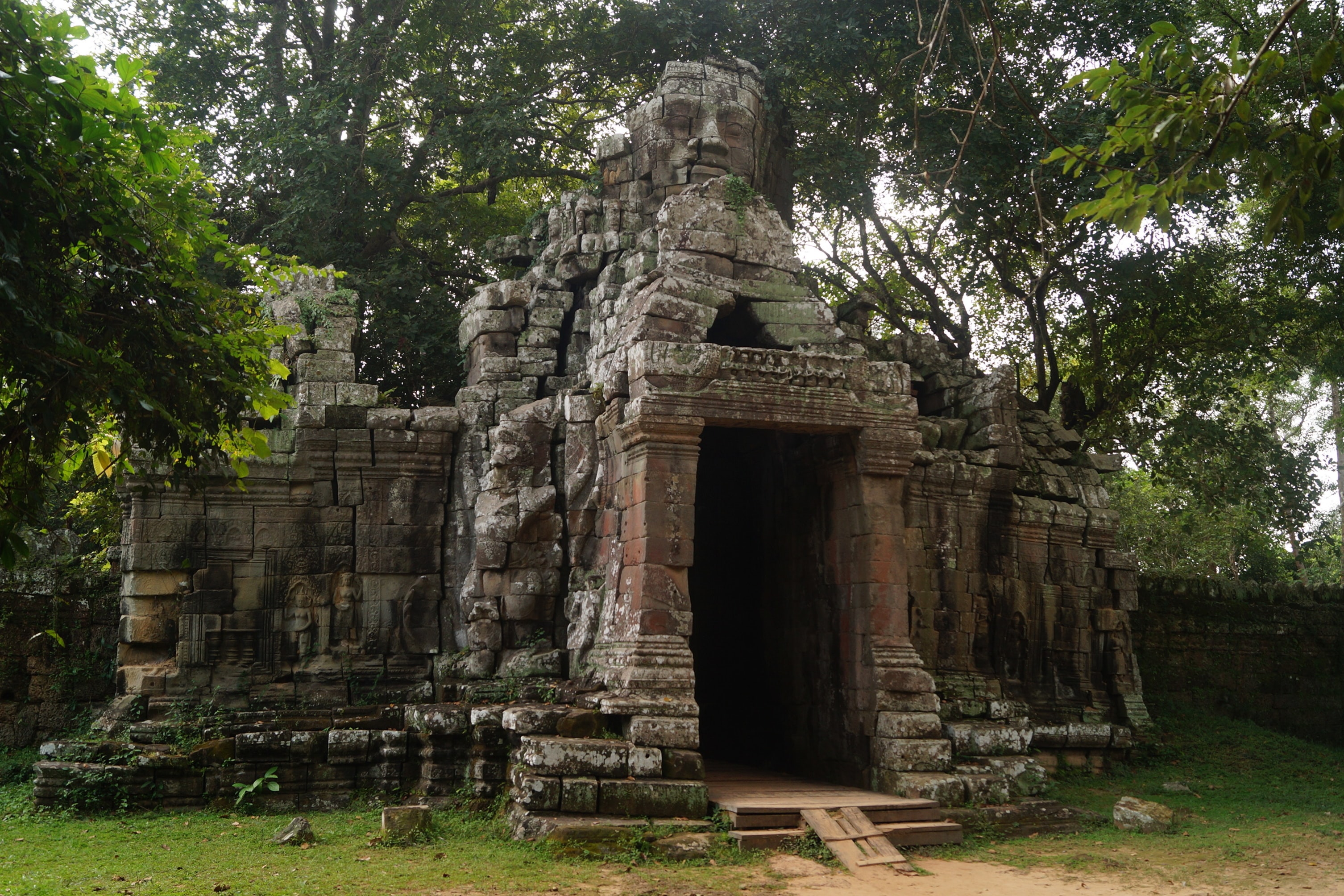
Pre Rup
From Banteay Kdei, head east to get to the Pre Rup temple, a Hindu temple built in the 10th century for King Rajendravarman. The Pre Rup is a temple-mountain architecture made with brick, laterite, and sandstone.
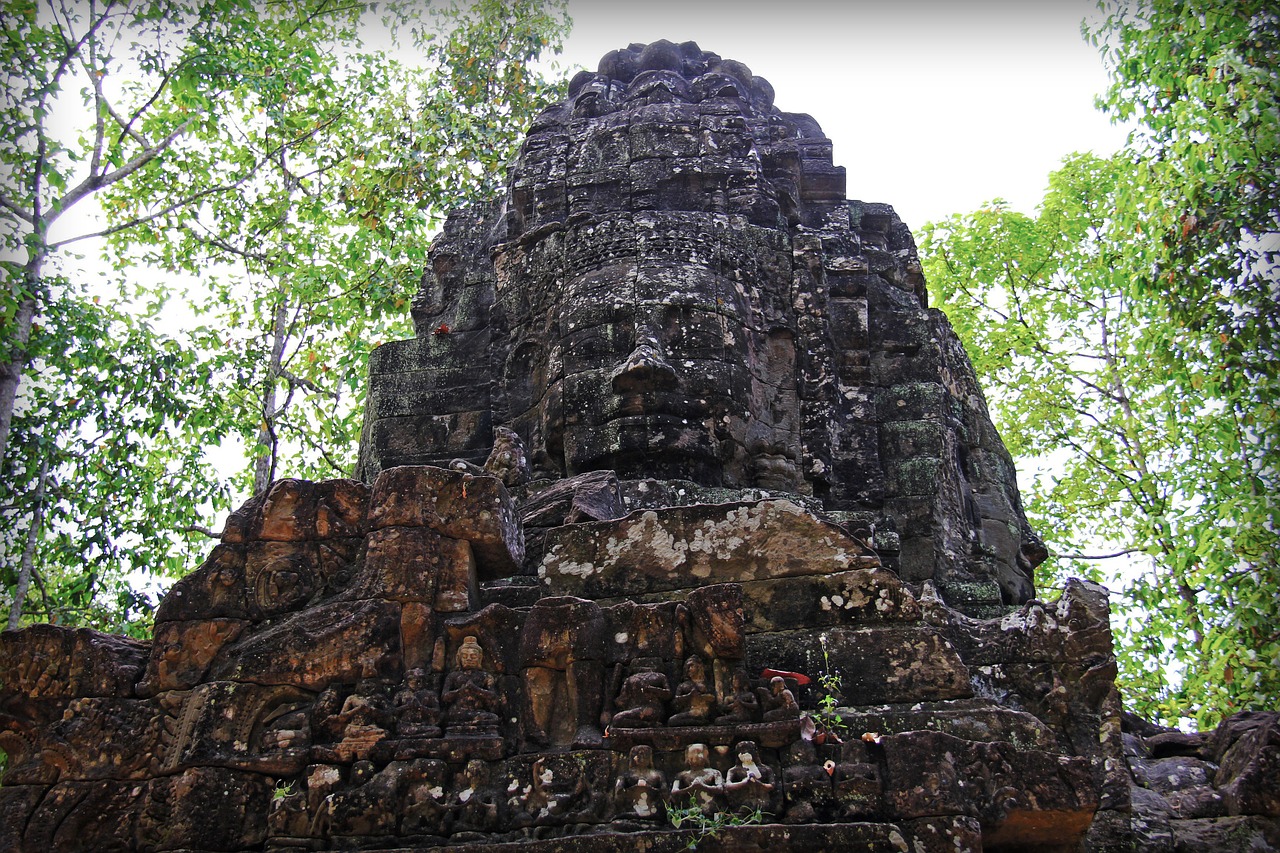
Neak Pean
After visiting Ta Som, head west to Neak Pean, an artificial island with what is now a Buddhist temple on it. Neak Pean was built during King Jayavarman VII’s reign as a Hindu temple with an artificial pond based on the ancient Hindu belief of balance for curing disease. The central pond is surrounded by four smaller ponds on each side of it. In each pond, there is a gargoyle in a different shape, namely the head of a king, an elephant, a lion, and a horse.
Preah Khan
Preah Khan was built in the 12th century for King Jayavarman VII to honor his father. It is located to the west of Neak Pean. The Preah Khan temple is a large rectangular complex with an outer bastion wall and moat, enclosing 138 acres. In addition to the size, Preah Khan is one of the most outstanding examples of Khmer temple architecture with a two-story pavilion and a Hall of Dancers.
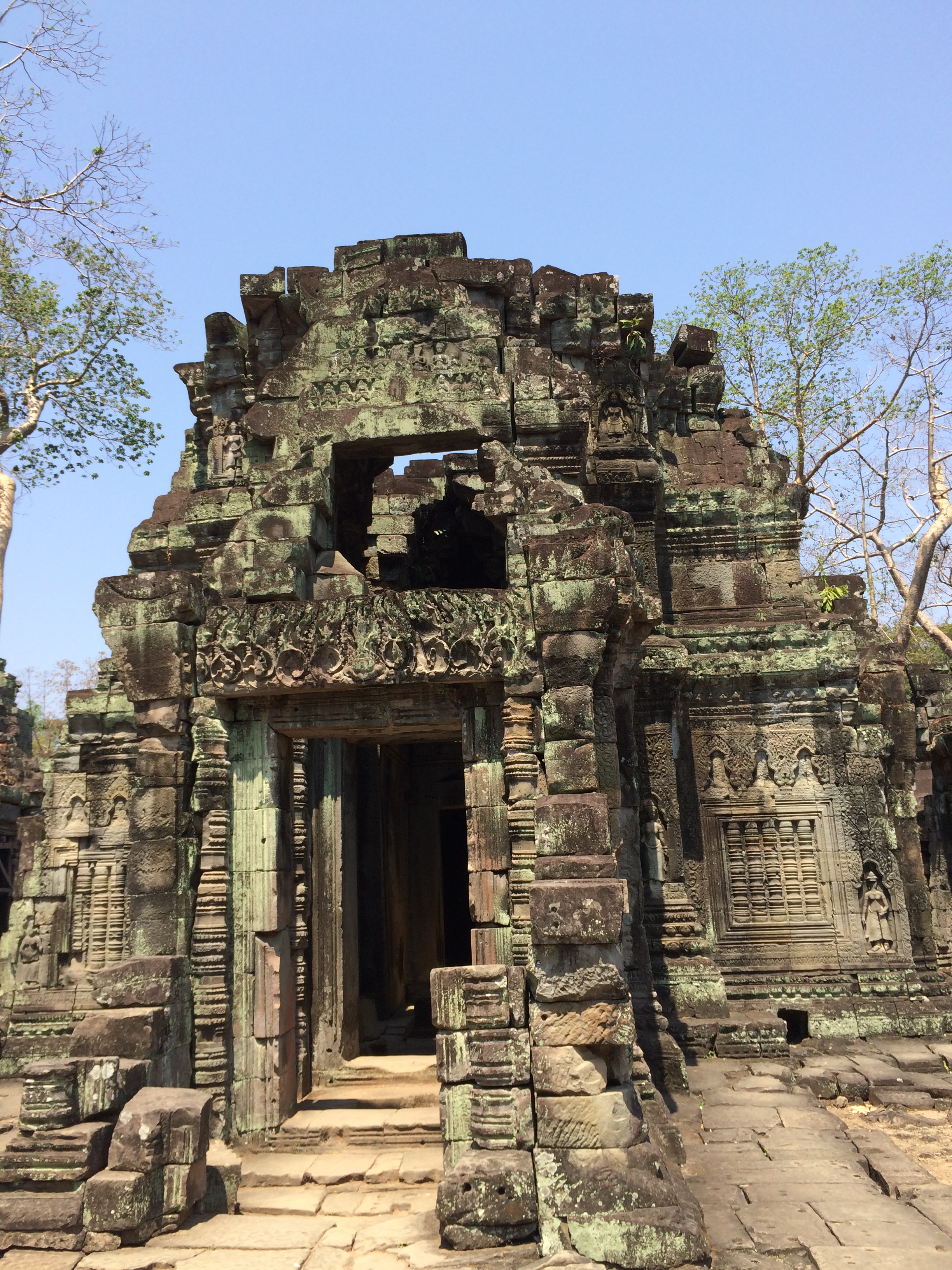

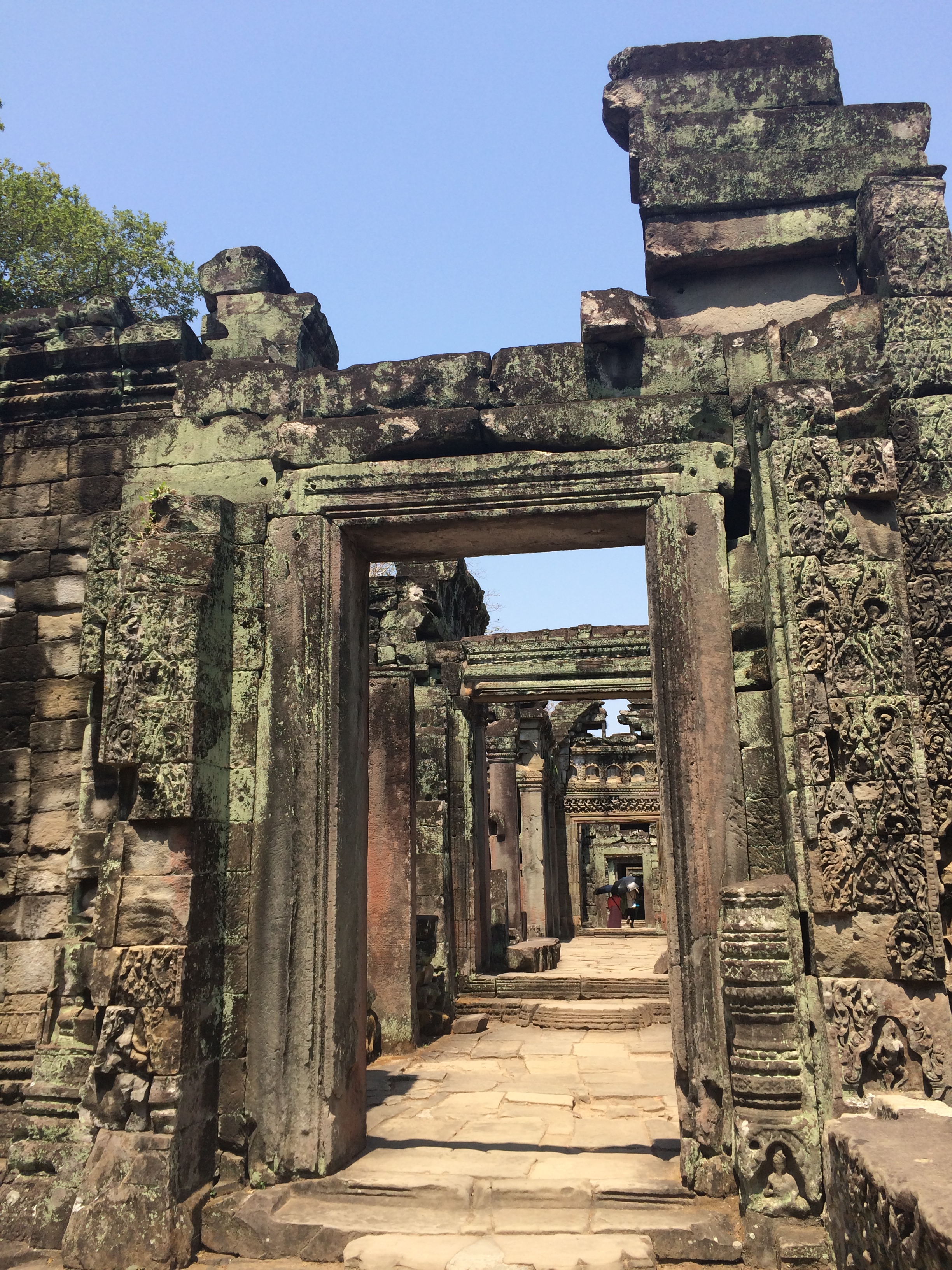
Day 3: Banteay Srei and Beng Mealea
Banteay Srei
Banteay Srei is located about 40 km northeast of Siem Reap center. Banteay Srei was built largely of red sandstone in the 10th century and was dedicated to the Hindu God Shiva. Banteay Srei temple is smaller than the temples at Angkor Wat or Angkor Thom. The intricate decorative carvings on the surfaces have been well preserved. The distinctive red color, miniature scale, and exquisite carvings make Banteay Srei temple a popular place to visit.
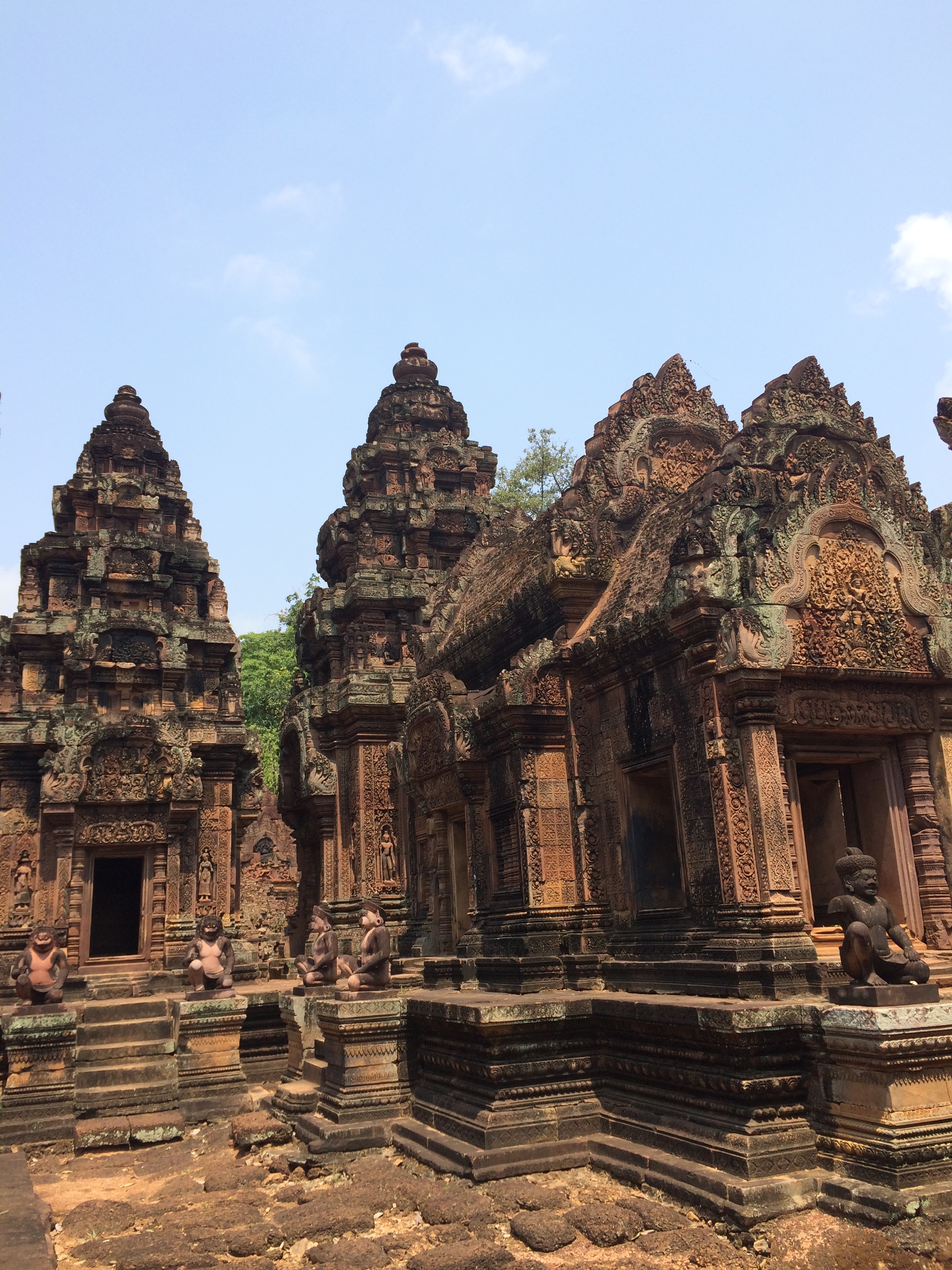
Beng Mealea
Beng Mealea is located around 68 km southeast of Banteay Srei. The Beng Mealea temple has was included in Angkor Pass only recently. Before, visitors had to pay $5 to enter. The Beng Mealea Temple was built in the 12th century for King Suryavarman II.
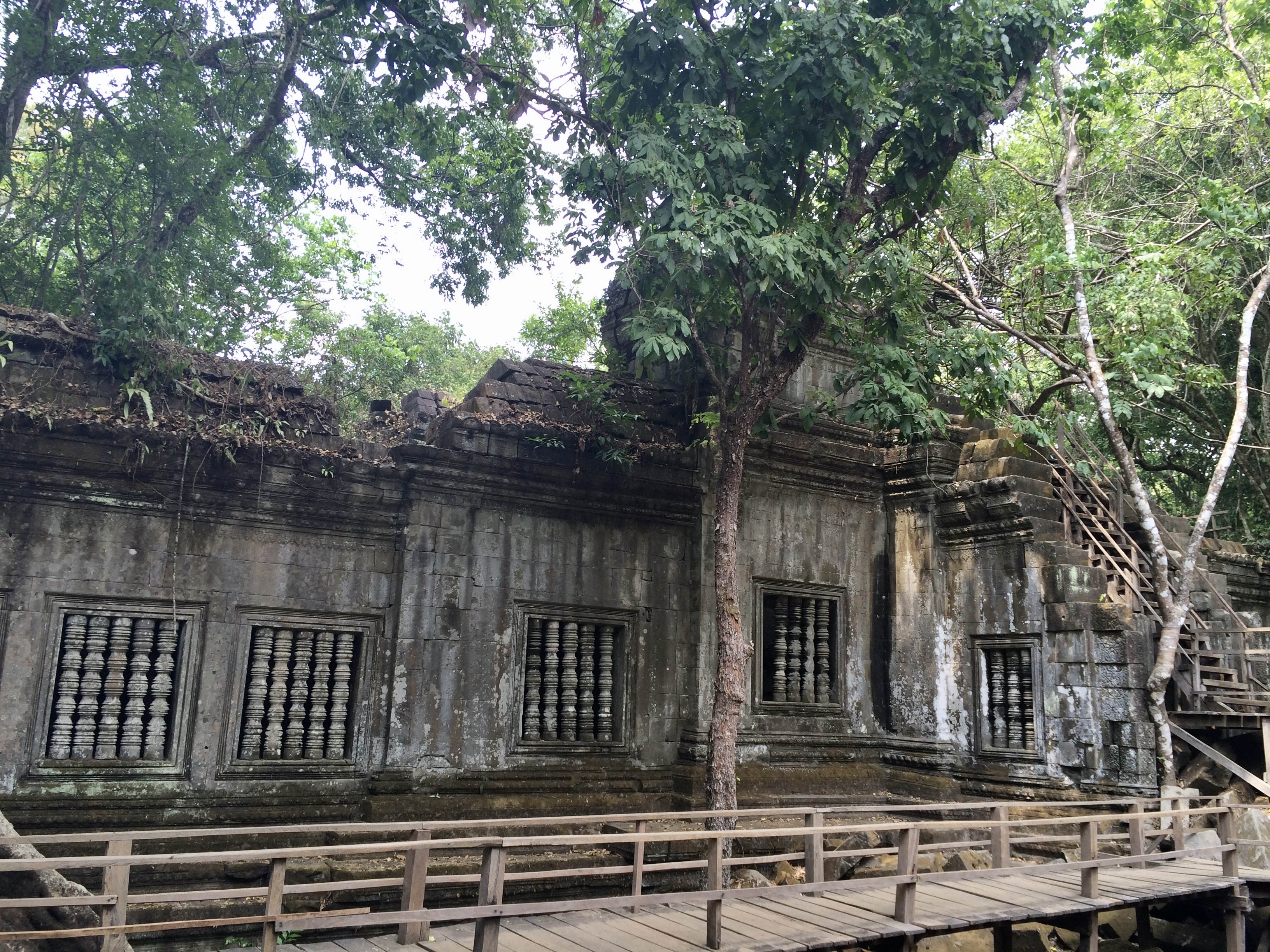
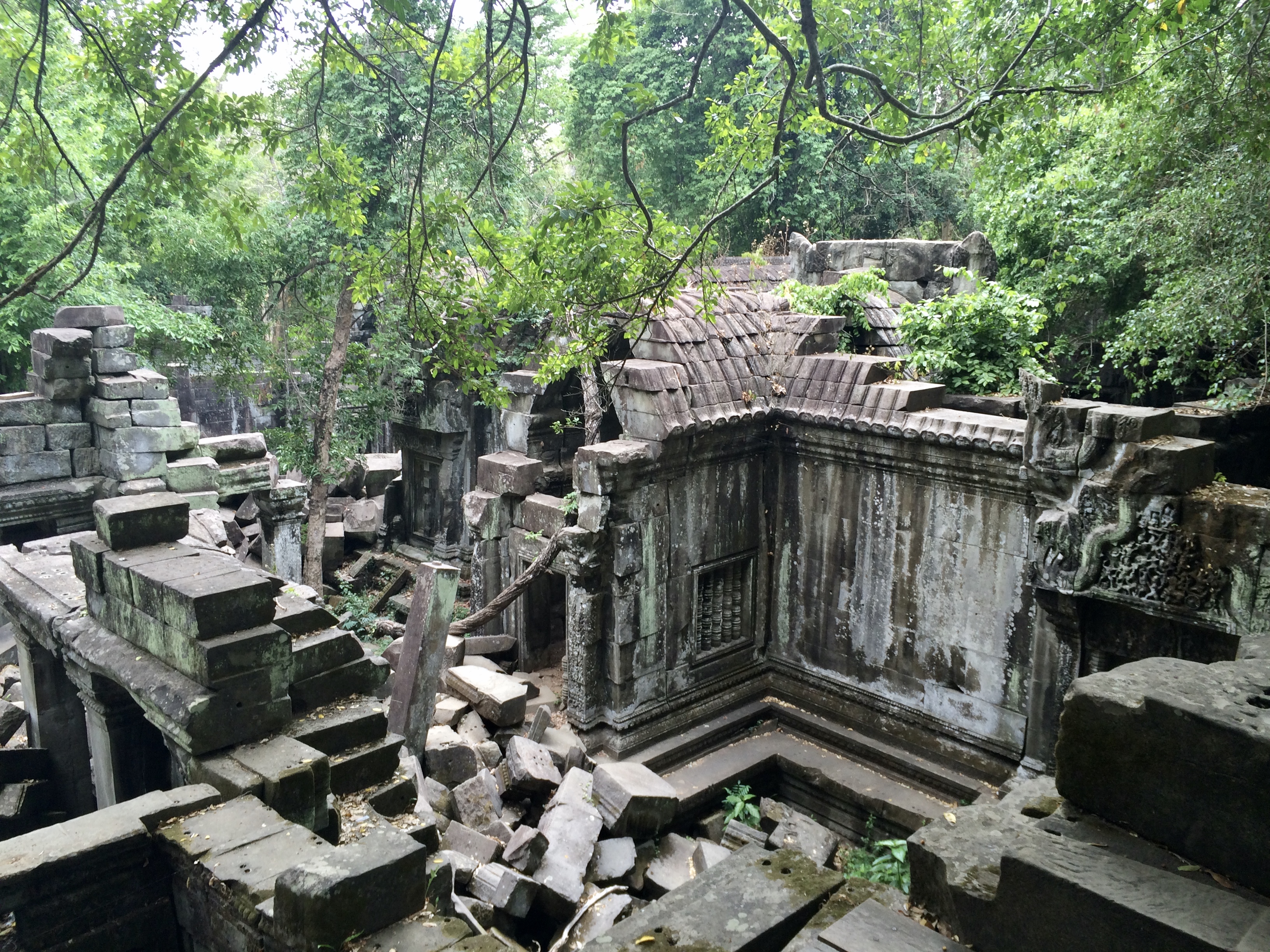
These two sites are a bit remote, so plan half a day to visit each one. But those two temple complexes are unique and worth visiting.
Traditional Cambodian Food
1. Fish Amok
Fish Amok is Cambodia’s signature dish. Amok refers to a traditional way of cooking – to steam ingredients with curry in banana leaves. The banana leaves give the dish a distinctive aromatic flavor.
Fish Amok is made with fish, coconut milk, and curry, steamed in banana leaves. You can easily find this dish on most of the menus in Cambodia.
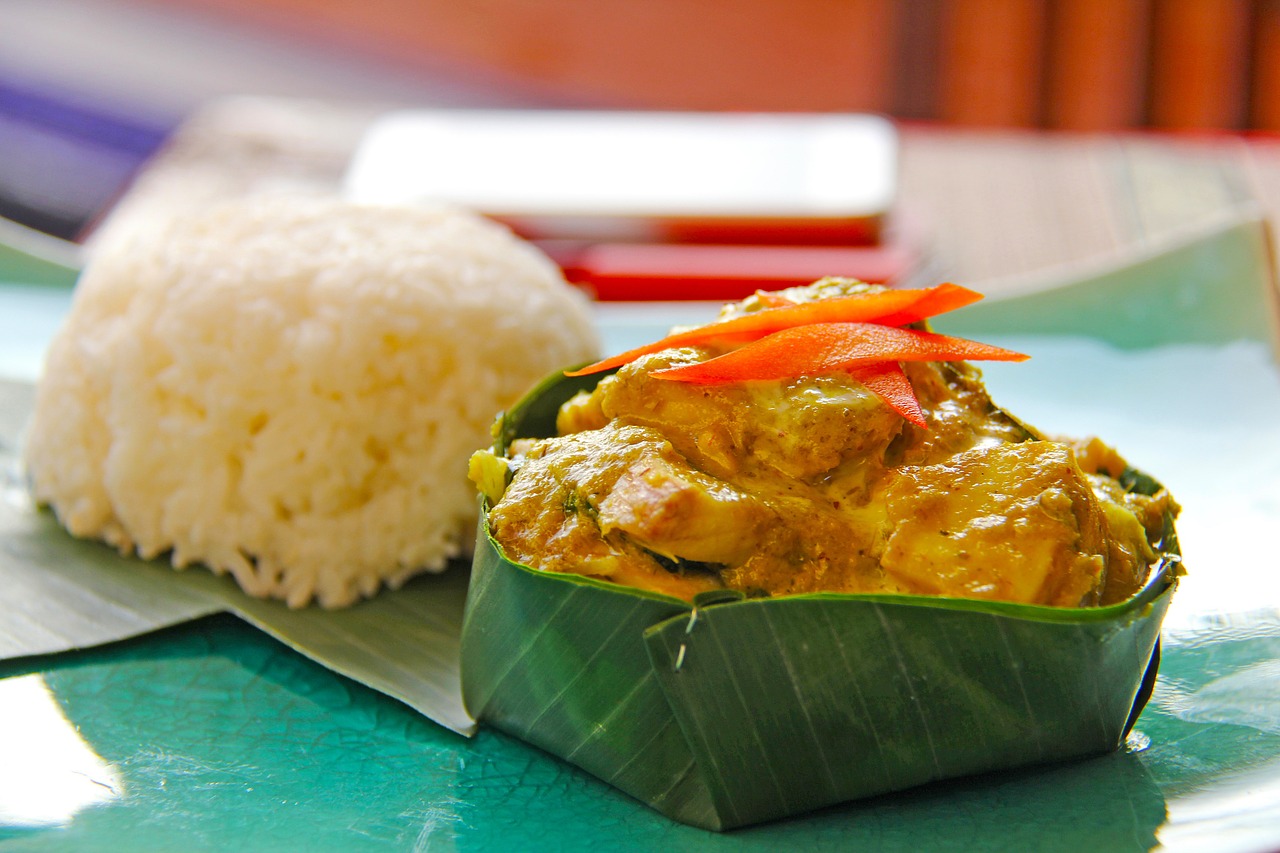
2. Nom banh chok (Khmer noodles)
Nom banh chok is one of the most common street dishes. You can easily find Nom banh chok almost everywhere. Nom banh chok is made with rice noodles in clear broth, with beansprouts, vegetables, mint and basil, served along with green fish curry as a sauce.
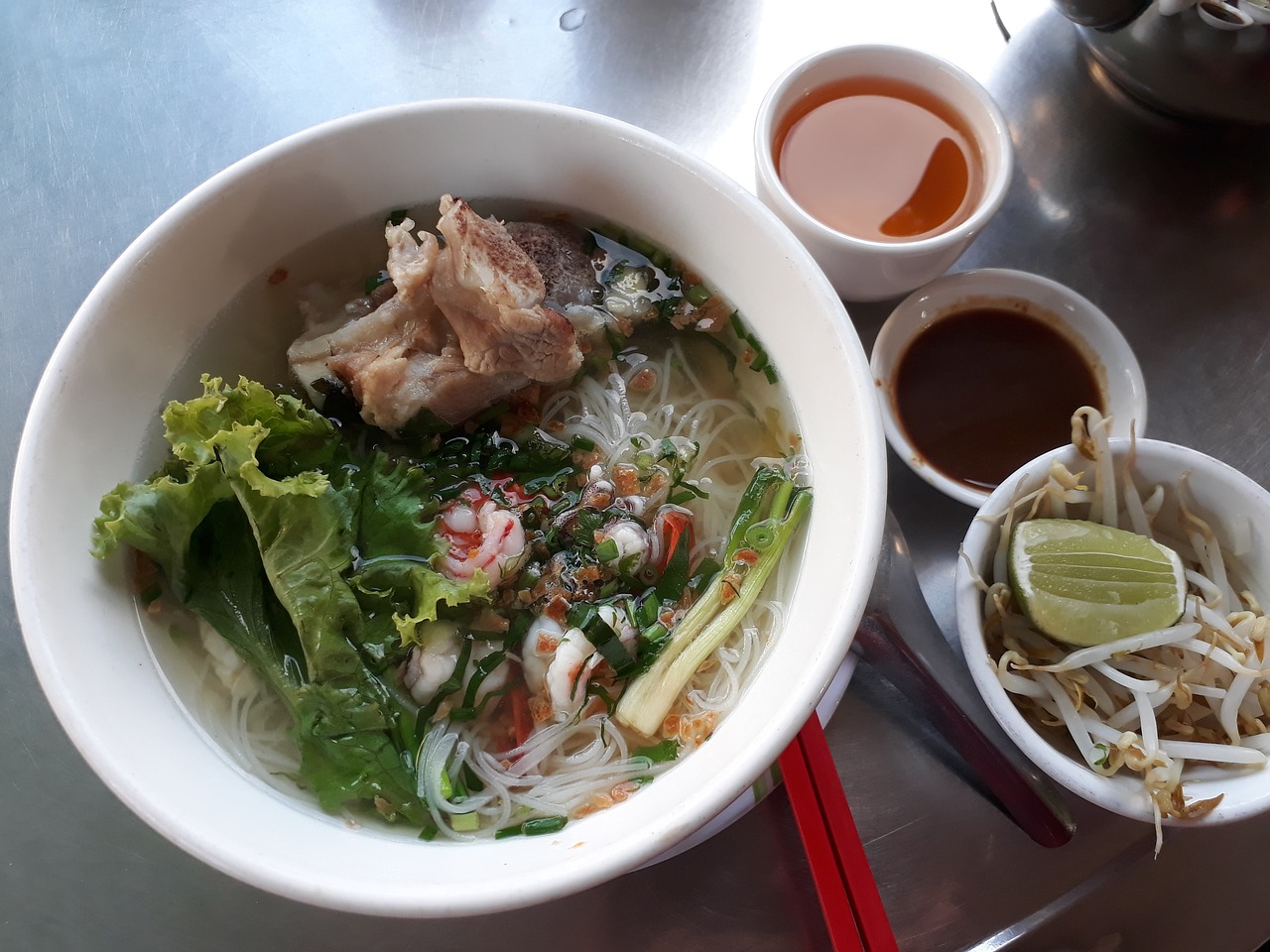
3. Bai sach chrouk (Grilled pork and rice)
Bai sach chrouk, considered Cambodia’s national breakfast, is only available in the morning. Bai sach chrouk is made with pork marinated in coconut milk and slowly barbequed. Served with rice, fresh vegetables and a small bowl of clear chicken broth.
4. Green Mango Salad
Thanks to the year-round warm weather, there are many kinds of delicious fruits in Cambodia. The green mango here is commonly used to make a refreshing salad. Made of sliced green mango, tomatoes and shallots, with fresh chili and chopped onion, basil and mint, mixed with fish sauce, the green mango salad is packed full of flavor with a zesty taste.
5. Lok lak (Stir-fried beef in brown sauce)
Lok Lak is beef stir fried in soy sauce, served with onion, cucumbers, and tomatoes underneath the beef. You can dip the beef into a sauce made of lime juice, salt, and pepper. Today, chicken and vegetarian lok lak are also available if you prefer that.
Where to Eat in Siem Reap
If you want to experience authentic local food in Cambodia, you have to try some street food. You will see plenty of food vendors everywhere, but there are some famous night markets where you can find all kinds of local food and have a relaxing time. Be sure to visit the Red Piano.
Old Market (Psar Chaa)
The Siem Reap Old Market is located on the western bank of the Siem Reap River, very close to the center of Siem Reap. Known as Psar Chaa by the locals, the Old Market is where they shop for groceries in the morning. After dark, there are plenty of food stands that serve delicious local dishes.
Angkor Night Market
Angkor Night Market is located in the central area of Siem Reap. Today, the market has become a tourist site in which you can find almost anything, such as food, drinks, and souvenirs. The most touristy parts are on the outer edges, so head deep into the market to find real gems. It is a great place to unwind after a day exploring the temples.
The Red Piano
The Red Piano is located at the entrance of Pub Street in the center area of Siem Reap. The Red Piano is one of the most well-known restaurants in Siem Reap as Angelina Jolie used to hang out there during the filming of the movie Tomb Raider. The Red Piano offers a wide selection of dishes from traditional Khmer food to Western fare, such as pasta, steaks, and salads, which isn’t common in other local restaurants. The Red Piano offers plenty of choices for seating, including indoor, sidewalk, and the balcony on the 2nd floor. It is a wonderful place to hang out with your family or friends and sip a cocktail.
Traveling to Cambodia will surely give you an exotic experience from the massive archaeological temples to the local food. I hope this article can help you plan your trip to Angkor Wat. I will see you in my next post!



